Welcome to our epic Norway 2-week itinerary, where breathtaking landscapes, charming villages, and unforgettable road trips await you. Embark on a thrilling road trip from Stavanger to Bergen, two of Norway’s most picturesque cities.
Our carefully crafted road trip will take you to stunning Norwegian fjords, hike through majestic mountains, and immerse you in Viking culture.
We’ve spent over 12 months living and travelling through Norway during the various seasons and with so much to explore there we’d recommend you pop it on your bucket list. Our base was the historic village of Skudeneshavn, on the doorstep of this Stavanger to Bergen road trip.
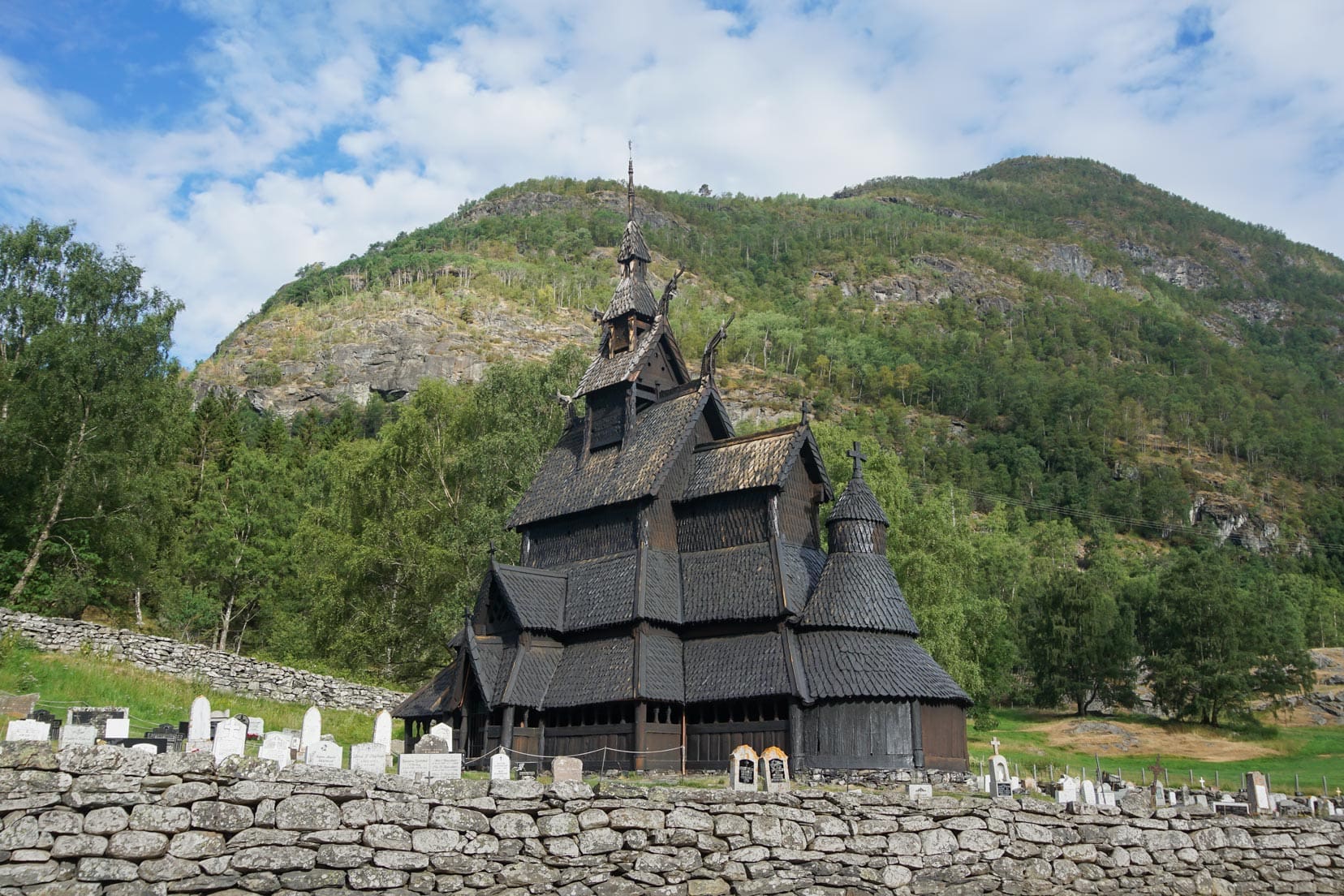
Planning a Trip to Norway?
- 🚗 Hiring a car? We recommend getting a quote from DiscoverCars
- 🚐 Hiring a campervan? We recommend Motorhome Republic
- ⛑ Arranged your travel insurance? Compare quotes from World Nomads & Safetywing
- 🪪 Order your International Driver’s Licence online here
- 🏩 Booked your accommodation? We use Booking.com to find the best deals
- 🐾 Is someone pet-sitting for you? 🐾 We use and love TrustedHousesitters
- (Get 25% off at checkout for new memberships with our discount code: LIFEJOURNEY25)
So what attractions can you look forward to seeing during these two weeks in Norway?
Old traditional Norwegian towns, Norway’s magnificent medieval stave churches, cruising a fjord, visiting stunning waterfalls and much more. And all this whilst driving Norway’s Scenic Routes which showcase the best landscapes of this Viking land.
Overview of This 14-Day Norway Itinerary
We’ve included stunning attractions located within easy driving of this Stavanger to Bergen route, to make sure you get the most out of your Norway two-week itinerary.
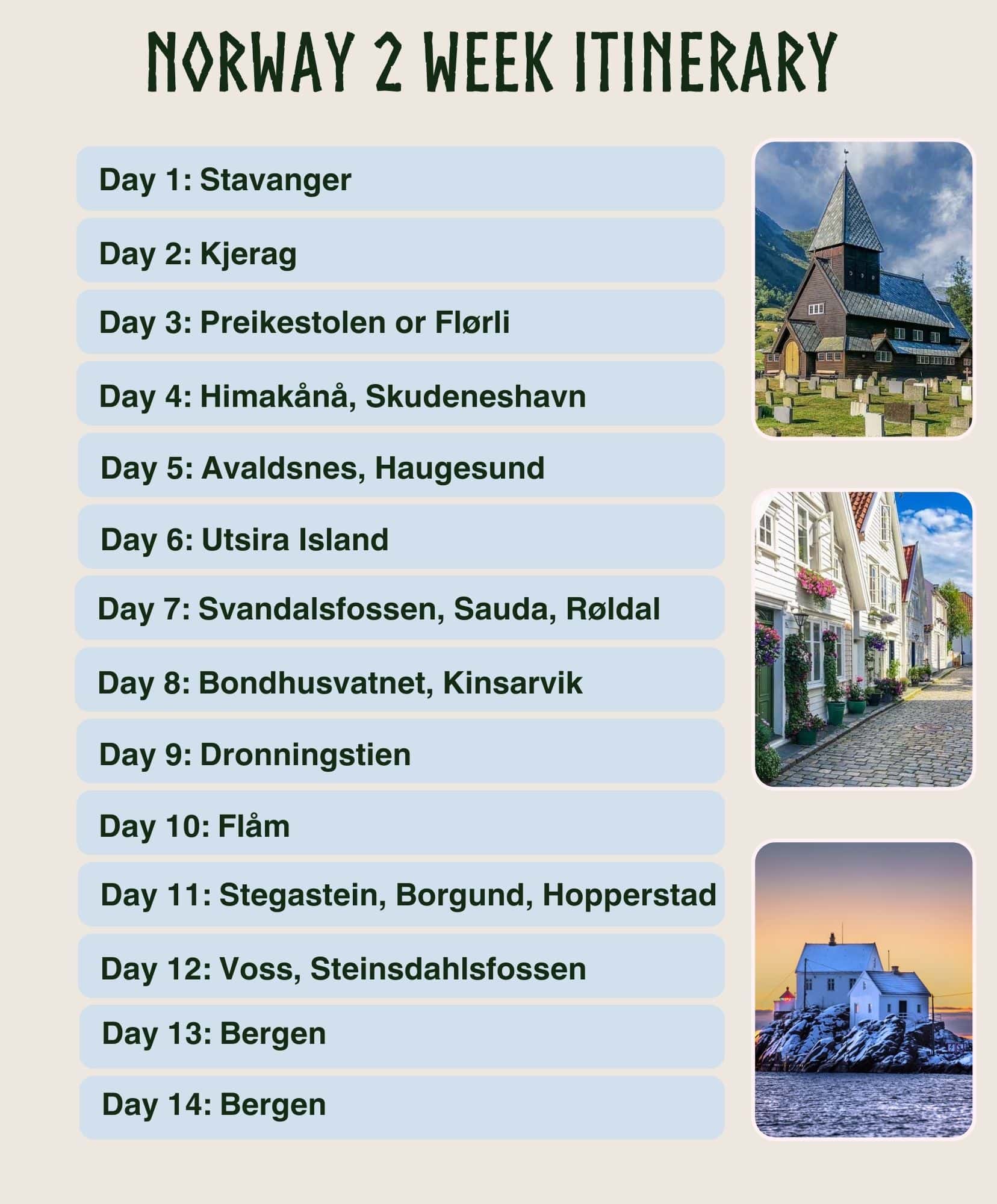
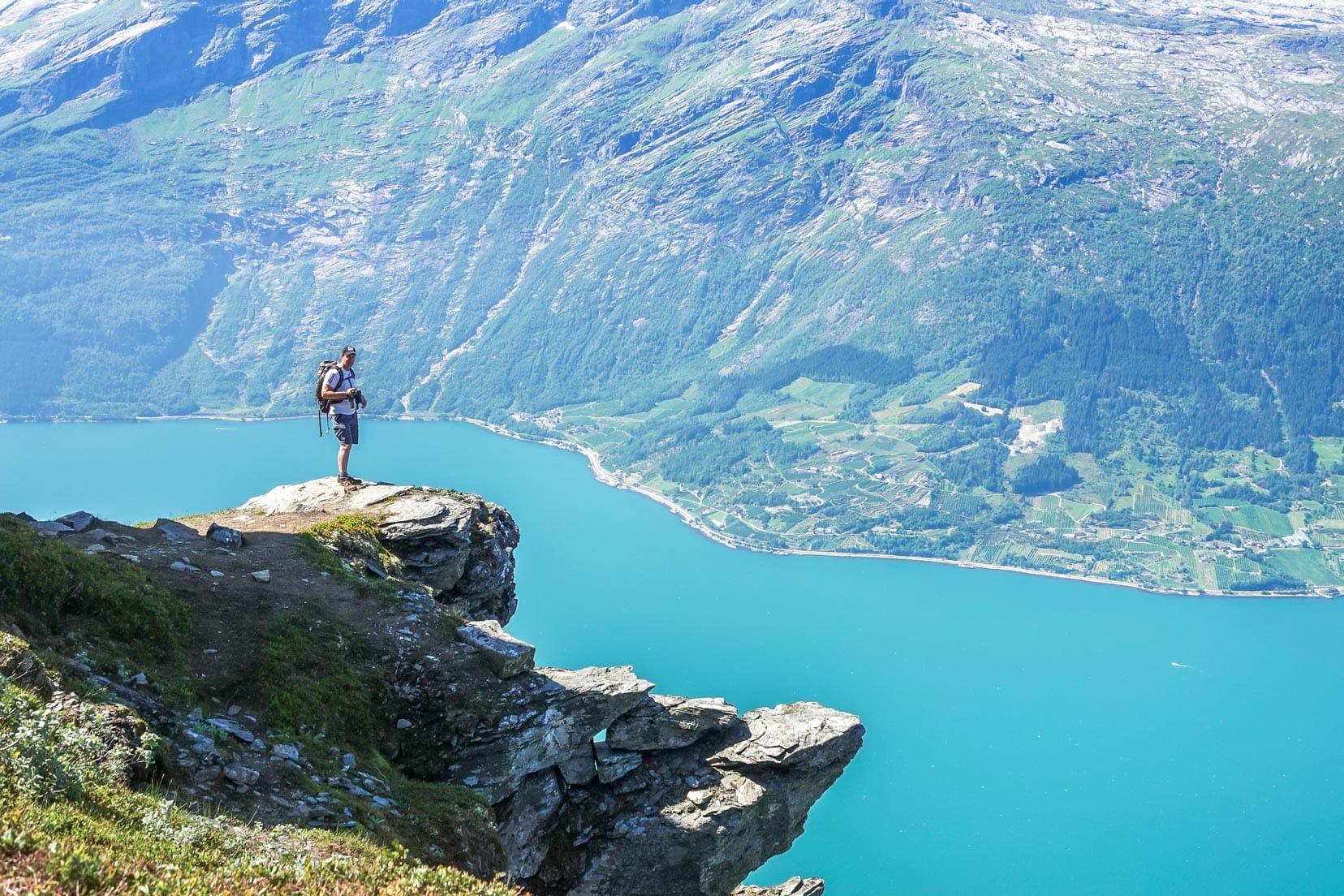
Route Overview – Stavanger to Bergen
Below you’ll find the driving route for this 2-week road trip in Norway.
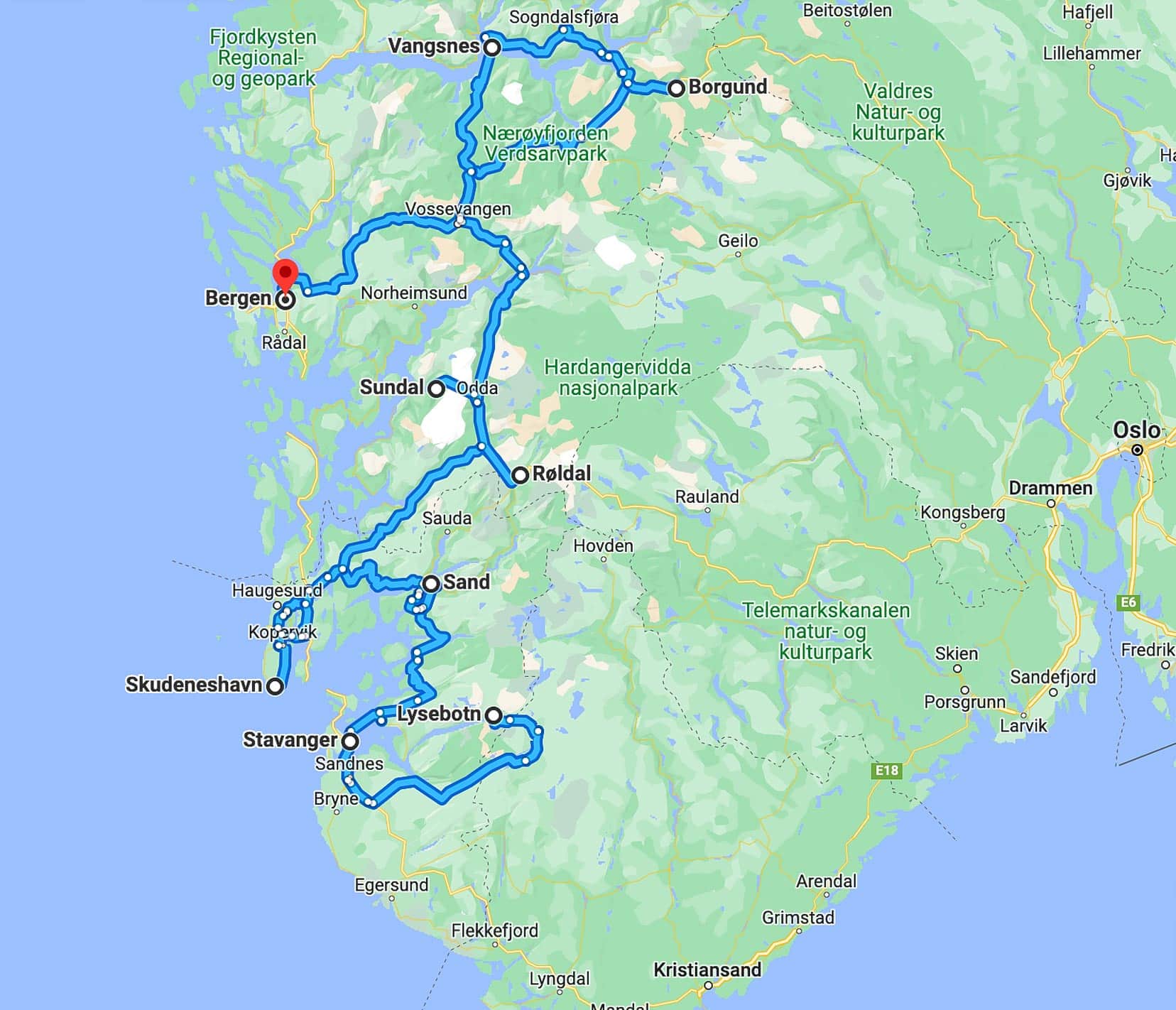
This is the first of a series of four road trip articles that all include not-to-be-missed attractions with stunning scenic drives between Stavanger (in southern Norway), all way north, to the Lofoten Islands (in northern Norway).
Here are the additional Norway road trip articles:
- #2 article: Bergen to Trondheim Road Trip
- #3 article: Trondheim to Bodo Road Trip
- #4 article: Lofoten Road Trip



Norway 2-Week Itinerary in a Nutshell (main attractions)
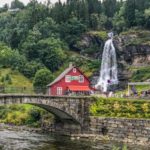
9. Waterfalls

10. Bergen
Planning Your 2-Week Norway Itinerary
We’ve taken the hassle out of you spending hours planning a Stavanger to Bergen Road Trip by giving you this fantastic tailor-made 2-week itinerary.
You can start this fun-filled trip from either Stavanger or Bergen. Both cities have international airports and it’s easy to pick up a hire car or hire motorhome option that works for you.
🚘 If you are looking to hire a car then we recommend DiscoverCars.
- They are winners of the World’s Best Car Rental Booking Website
- They have a Price Match Guarantee.
- 4.5 Rating on Trustpilot
- Free Cancellation

💡Tip: If the Northern Lights are on your agenda, then you’ll need to travel much further north from Bergen, to at least latitude 66ºN, near the Lofoten islands. And, importantly, you’ll need to visit from September to March.
Norway Road Trip Map of Scenic Routes and Attractions
To use this map, click each location to find the corresponding position on the map.
- Red lines denote the different Norway Scenic Routes;
- Blue circles with stars denote an attraction;
- Green circles denote waterfalls;
- Black circles denote hikes;
- Purple circles denote the main towns;
- Yellow circles denote alternative options.
Norway Road Trip Itinerary – Stavanger to Bergen Road Trip
You could start this itinerary in either Stavanger or Bergen.
We started this road trip from Stavanger.
Day 1 – Stavanger
Jump straight in and immerse yourself in old, traditional Norway, starting in the old town of Stavanger.
Walk the picturesque cobble-stoned streets of Gamle Stavanger (or Old Town Stavanger), with its 173 historic 18th-century homes.
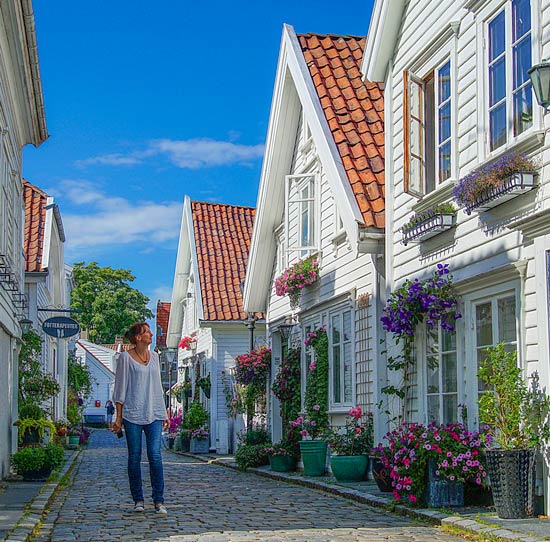
These beautiful steepled, white houses with their colourful flowering gardens make for a fairytale atmosphere.
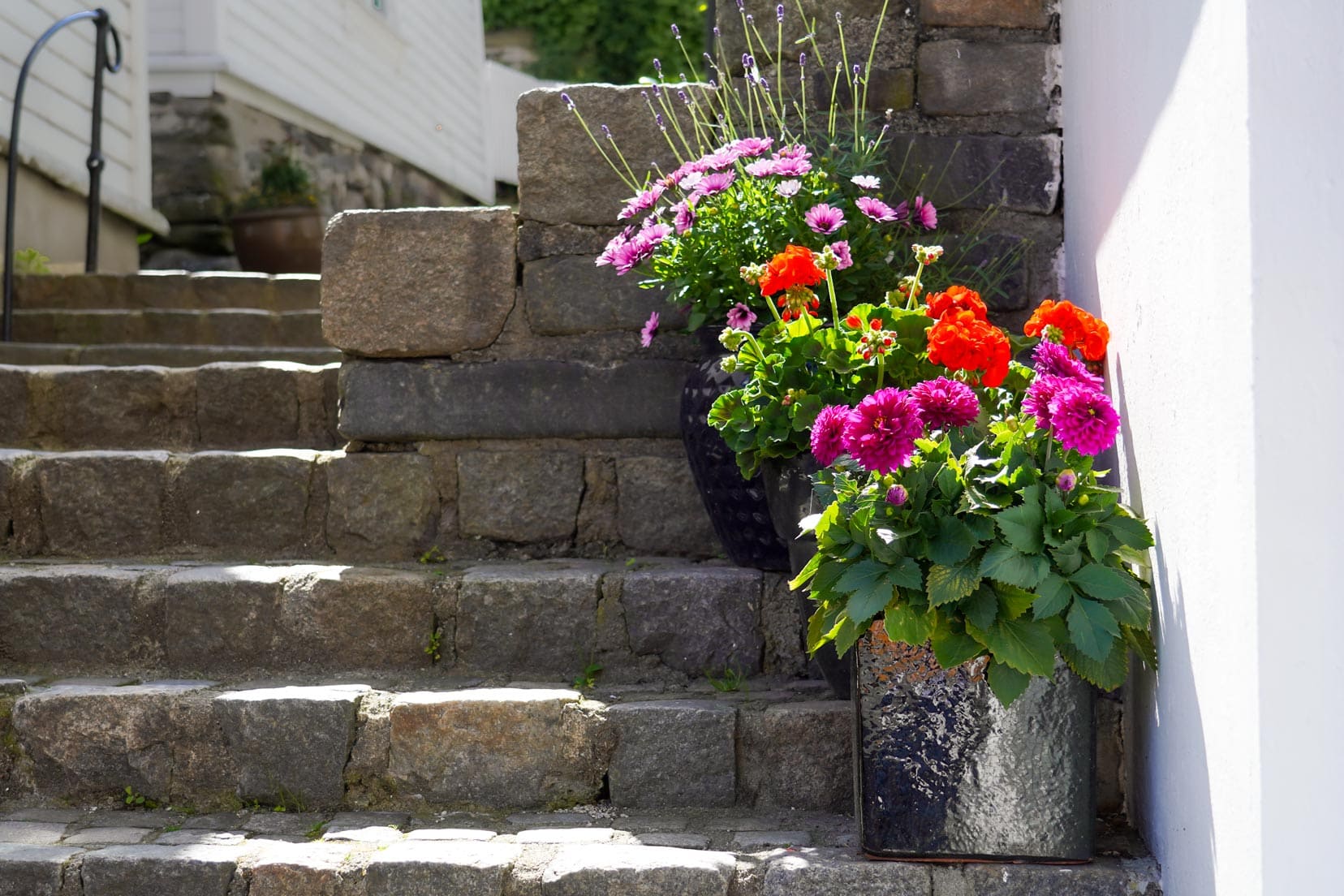
Your wanderings will take you down to the harbourfront which also forms part of Gamle Stavanger. It’s here you can choose to eat at one of the many restaurants that line the harbour boulevard.
These colourful buildings were once used as storage for herrings, logs and other goods.
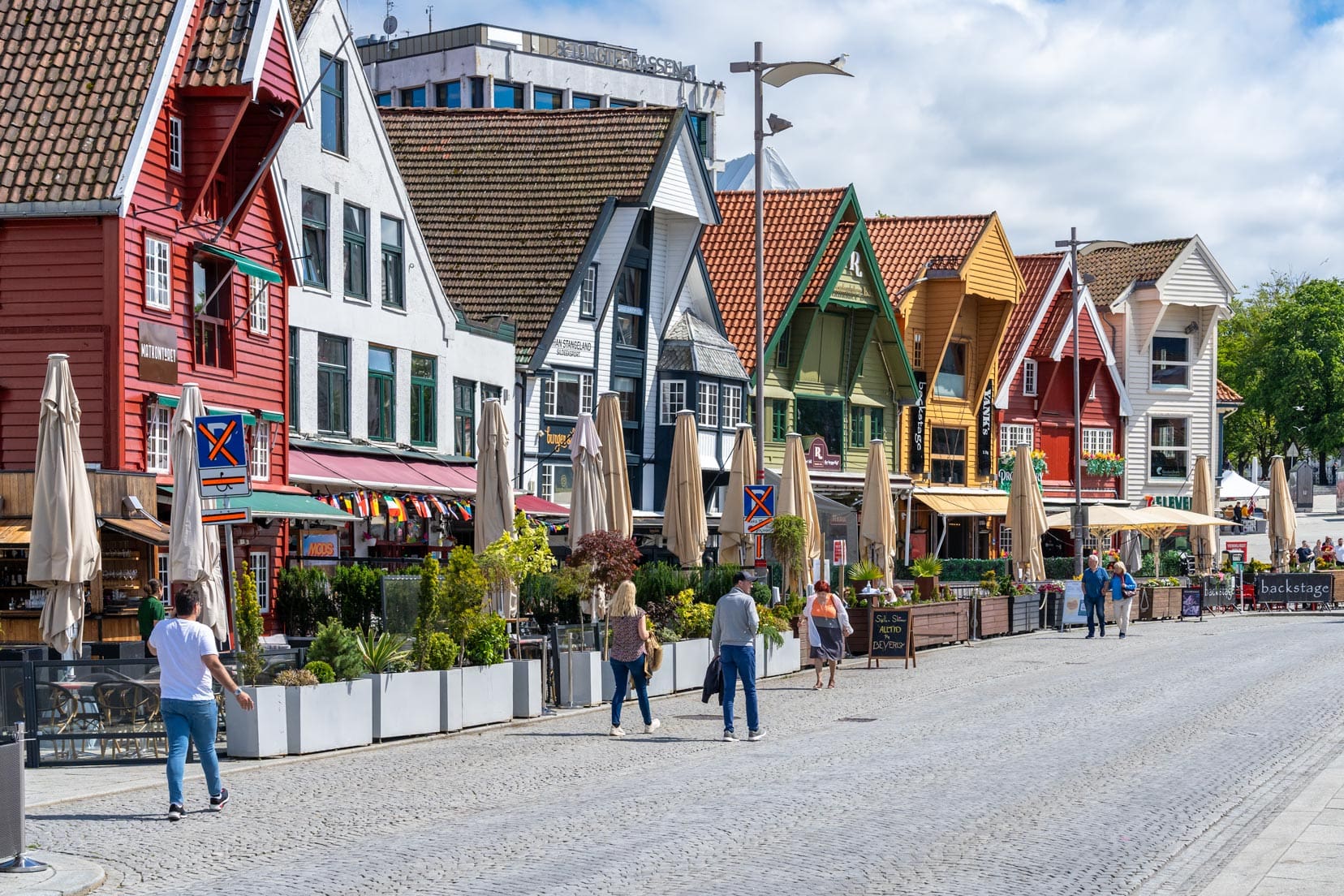
Stavanger, the fourth largest city in Norway, is known as the country’s oil capital, but there’s something that also makes this city interesting. It has a thriving street art scene, much like Utsira Island (mentioned later in this article).
Actually, there are 272 street art masterpieces on display. Find Stavanger’s great street art locations here on the Nuart Google Arts and Culture site.
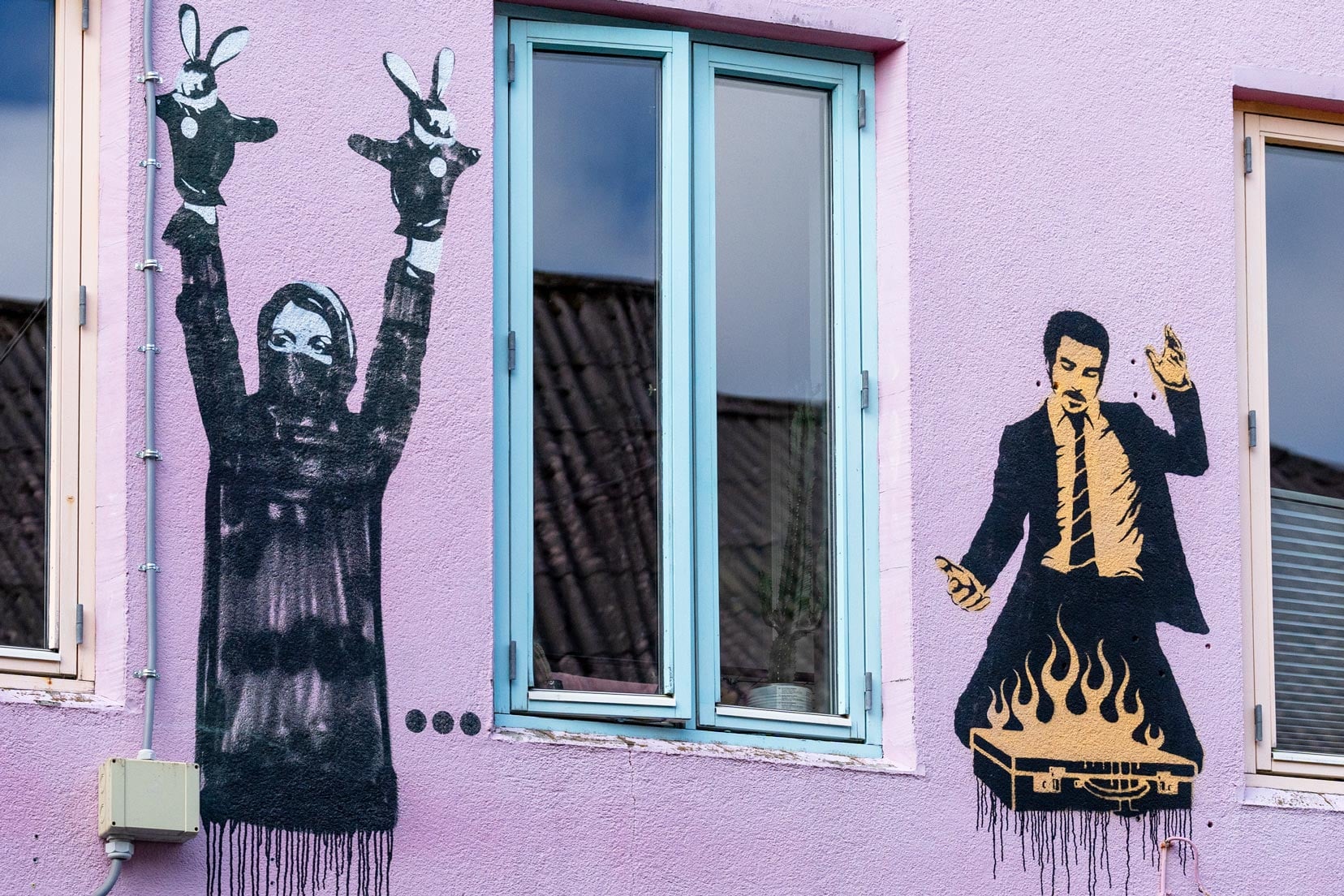
If you visit in summer then you may see one of the glorious tall ships of old, moored alongside the harbour. Or, it might be prepping for the next leg of the Tall Ships Races.
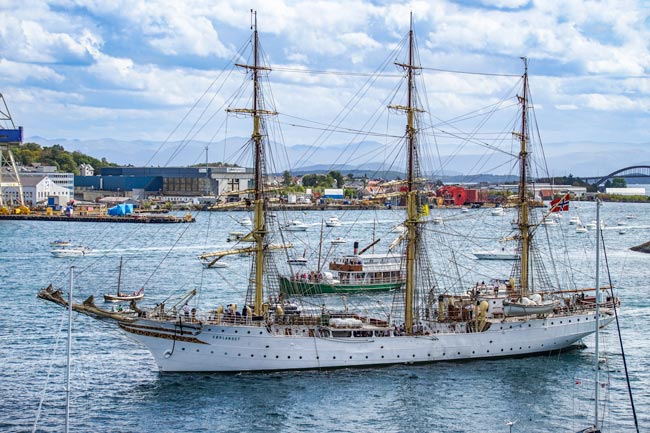
A short walk from the harbour is Byparken, a city park with a fountain lake. It’s lined with sculptures including a captivating, bronze statue of a boy with his captured duck and ducklings.
There are plenty of park benches in the park to enjoy the ambience of your surroundings.
From Stavanger, there are some world-class hikes not too far away with names you might already be familiar with; Preikestolen (Pulpit Rock) and Kjerag which overlook the magical Lysefjord.
Lysefjord is a 42-kilometre-long fjord about 25 kilometres from Stavanger located in the Ryfylke area of Rogaland County.
There are plenty of things to do in Stavanger.
Day 2 – Hike Kjerag
Hiking Kjerag mountain will involve a 6-hour return trip with the hike difficulty rated as demanding.
The hike offers birds-eye views of the Lysefjord below but the main goal of many is to stand on Kjeragbolten or ‘Kjerag Bolt’.
Kjeragbolten is a small, round boulder wedged high in a crevasse at an altitude of 984m. When standing on Kjeragboletn, there’s nearly a kilometre of nothing between you and the fjord.
Once you reach Kjerag, this marks the halfway and turnaround point of the hike.

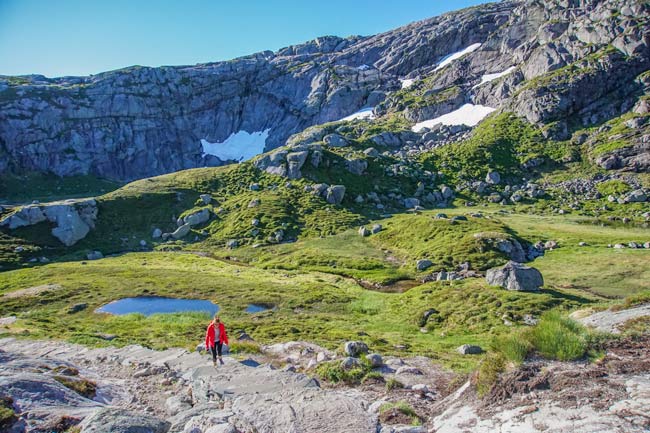
Standing on Kjeragbolten isn’t for everyone, and it doesn’t have to be. Even if you aren’t keen to venture out onto this wedged rock, you’ll be able to enjoy amazing views from the peak and throughout the hike. You’ll burn plenty of calories too!
Day 3 – Hike Preikestolen (Pulpit Rock)
About 2.5 hours drive from Kjerag lies the famous Pulpit Rock or Preikestolen, one of the most visited attractions in Norway. This 25m x 25m platform rises 600m above the Lysefjord and the hike is rated as medium difficulty.
If you want bragging rights then this is definitely one of the places to visit in Norway.
The Preikestolen hike round trip takes around 4 hours and is an easier hike than Kjerag. If your fitness is not the best or you are short on time then Preikestolen may be the better option.

Although we hiked Kjerag and Preikestolen on the same day, we would recommend that you spread the two hikes over two days for maximum enjoyment.
💫 If you have Extra time ▶︎ Visit the Flørli Stairs
Also in the vicinity of Kjerag and Preikestolen, about 40 kilometres from Stavanger, is the famous Flørli Stairs. These 4,444 wooden steps were built alongside the now-disused hydropower pipelines to help with maintenance.
The village of Flørli can only be accessed by boat. To fully enjoy the experience, give yourself 6 to 7 hours for going up and coming back down or consider taking this tour below.
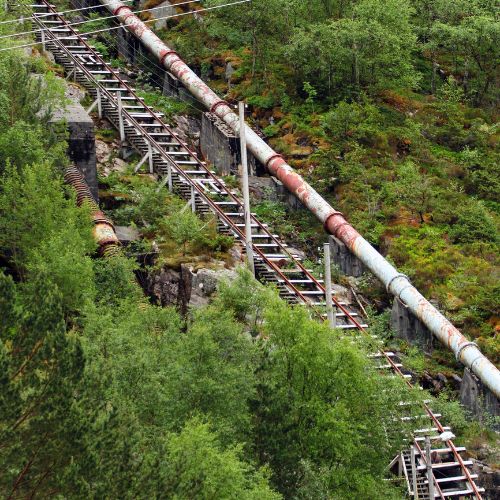
🏆 If you’re up for the challenge of the 4,444-step climb of one of the longest staircases in the world, then go for it!
⭐️ 5/5 Star Reviews | ⏰ 13 hours | Book it here.
Day 4 – Hike Himakana and Visit Skudeneshavn Old Town
Next, it’s time to drive north on the Ryfylke Scenic Route towards Himakana.
Hike Himakana
The Himikana hike is rated as moderate-difficulty and is certainly one that everyone can enjoy. The mountain sits at 357 metres above the fjord, so it’s a relatively short hike with great views.
Himikana is also known as the Mini-Trolltunga because, like Trolltunga, Himakana also has a flat stone protruding out above the fjord.
The hike (up and back) takes around 2 hours to complete and offers lots of different and interesting scenery.
The icing on the cake is definitely the grand views from the top over Boknafjord.
Himakana was one of our favourite hikes and a really beautiful place in Norway that wasn’t overwhelmed with summer tourists.
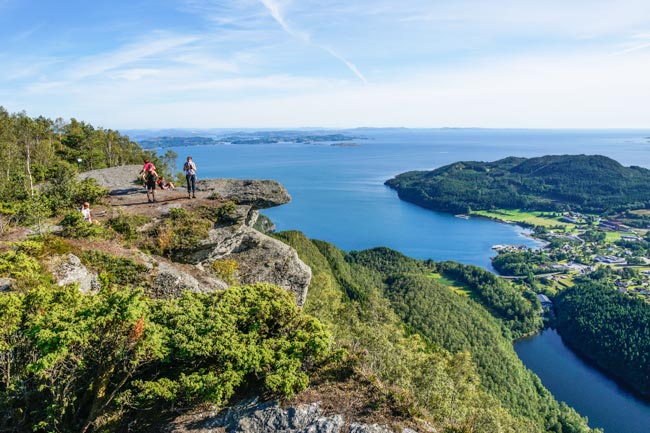
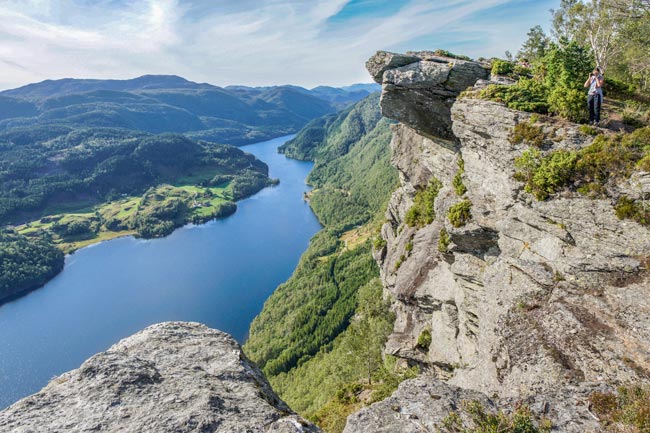
Visit Skudeneshavn Old Town
Skudeneshavn is located on the island of Karmøy, in an area that was once ruled by the Vikings. The old part of Skudeneshavn, known as Gamle Skudeneshavn or Old Town Skudeneshavn, has beautiful streets lined with charming white wooden houses, creating a warm and inviting atmosphere.
There is a lot to see and do around Skudeneshavn, such as:
- Visiting the World War II bunkers at Syreneset Fort
- Indulging in waffles and coffee in the Smallest Cafe in the World
- Admiring the half-house, Vaskehuset, near Skudeneshavn Park
- Finding the famous Moonstone in Skudeneshavn Park, and
- Walking through the old town with its beautiful, white timber buildings, right by the harbour.
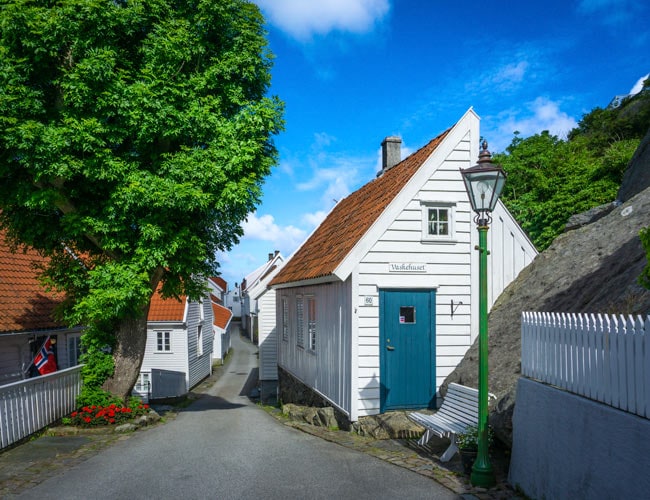
When driving north from Skudenshavn, on Route 47, look out for the pristine, white beaches of Sandvesanden and Åkra on Karmøy’s west coast.
With the beaches more or less right next to the road, it’s easy to stop and take a beach stroll.
Day 5 – Avaldsnes Viking Village and Haugesund
Avaldsnes
No trip to Norway is complete without a visit to the Viking settlement in Avaldsnes. The reconstructed buildings were built using the original Viking techniques from centuries ago.
Right by Avaldsnes is the Nordvegen History Centre which is a museum dedicated to telling the story of the Vikings and how Alvaldsnes became the first Royal Throne of Norway.
It’s the perfect place to immerse yourself in the colourful history of Norway.
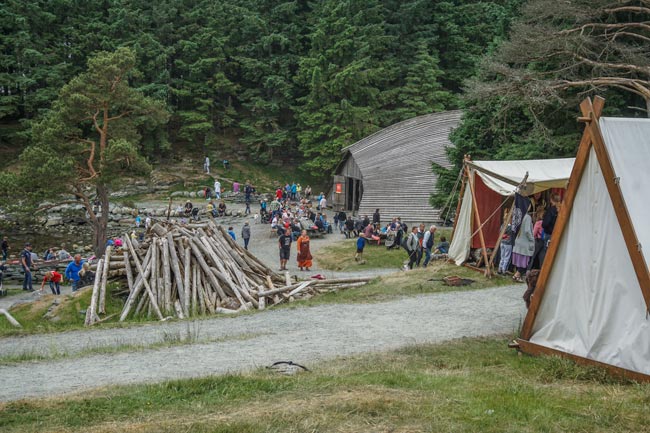
Close to the History Centre lies the restored St. Olav’s church, built around 1250 A.D.
Mary’s Needle, a huge stone monolith, leans towards this church and legend foretells that when the stone touches the church, judgement day will have fallen.
Luckily, there are still a few inches of separation.
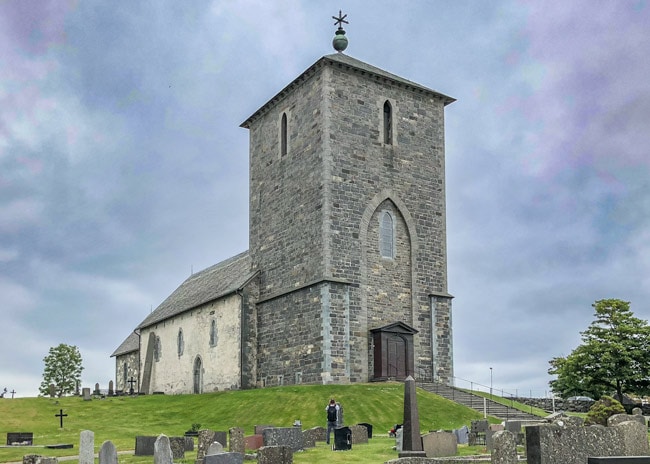
Haugesund
This coastal town, just 37 kilometres from Skudeneshavn, is largely known for its shipbuilding and repairs but also offers lovely walks along the waterfront and a wide range of harbour-front restaurants.
Not to be missed is the impressive monument, Haraldshaugen, dedicated to King Harald Fairhair, who unified Norway under one rule, way back in the late first century.
Each of the smaller stone pillars surrounding Haraldshaugen represents one of the historic Norwegian counties of old, with each pillar bearing a county’s name.
It’s free to visit.
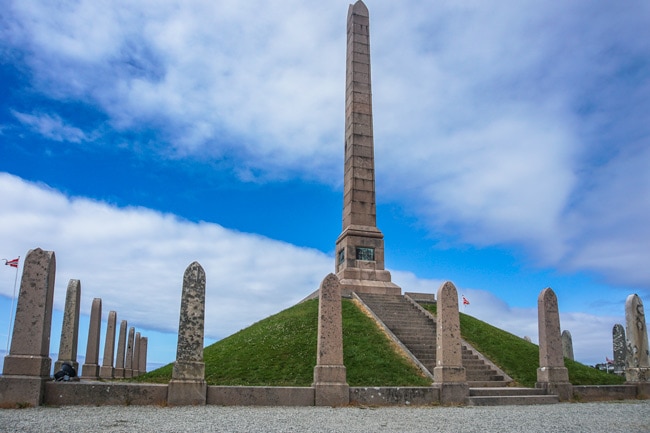
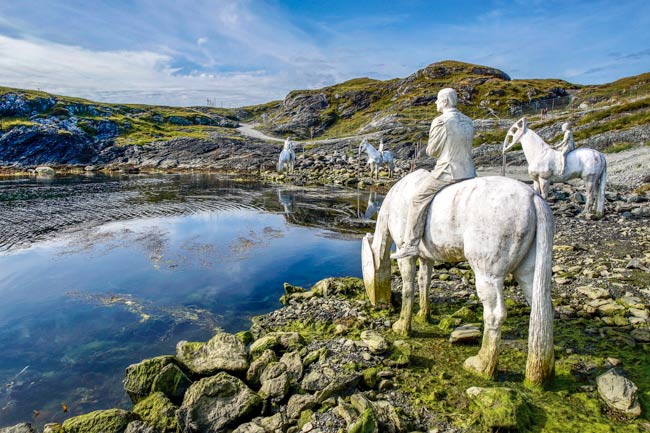
Just to the north of Haugesund, within the lapping waters of Kvalsvik, stand the four horseman statues.
The style is a fusion of the olden-day working draft horse and society’s newer dependency on oil production.
Certainly interesting works of art.
Day 6 – Utsira Island
From Haugesund, a short 70-minute ferry ride has you arriving at the amazing butterfly-shaped Utsira island.
This island has many attractions, including famous international street art that can be found all over the island.
Utsira is also popular for bird watching.
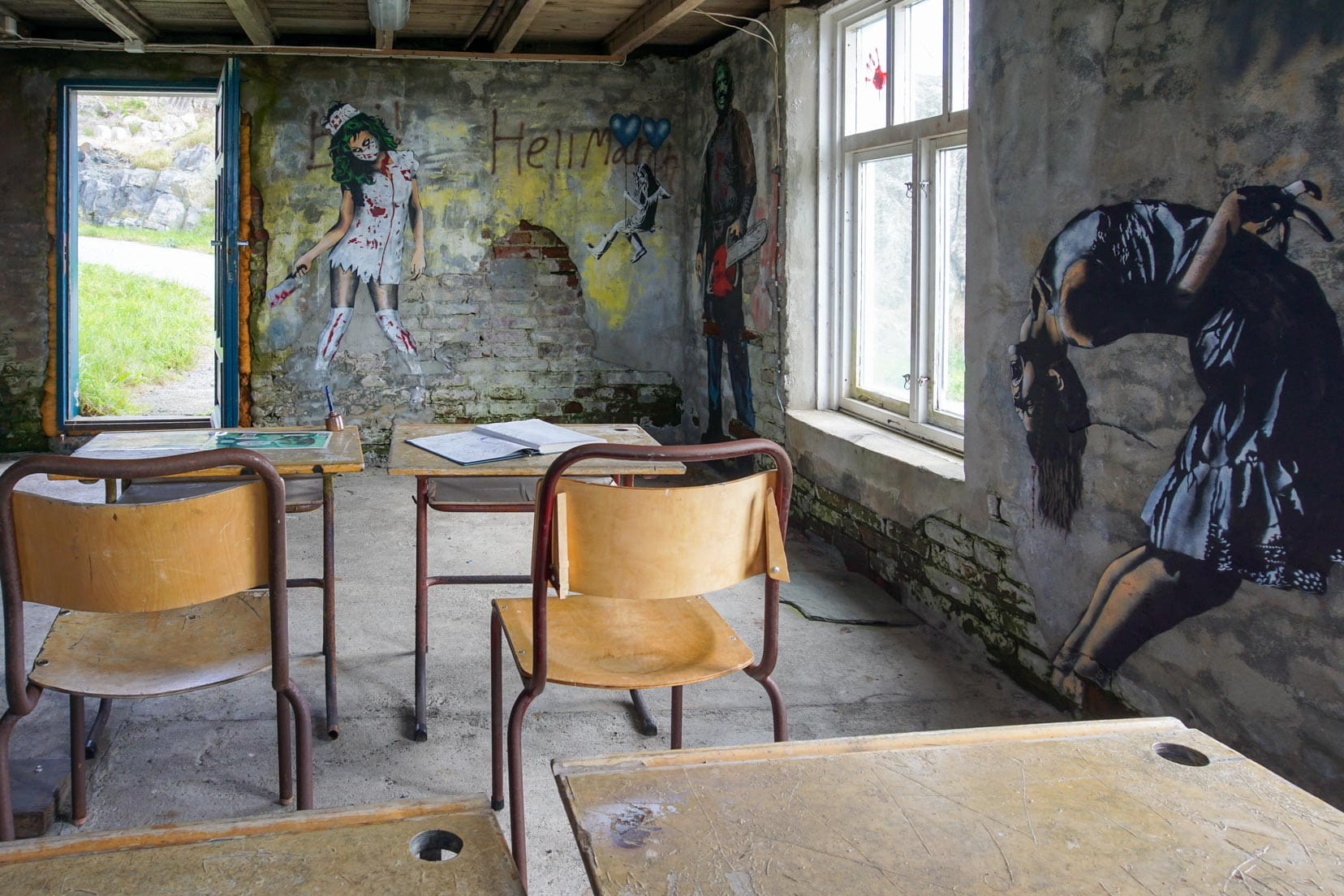
The old Utsira lighthouse, built-in 1844, is still operational but not in active service.
You’ll need a full day to enjoy all that Utsira has to offer.
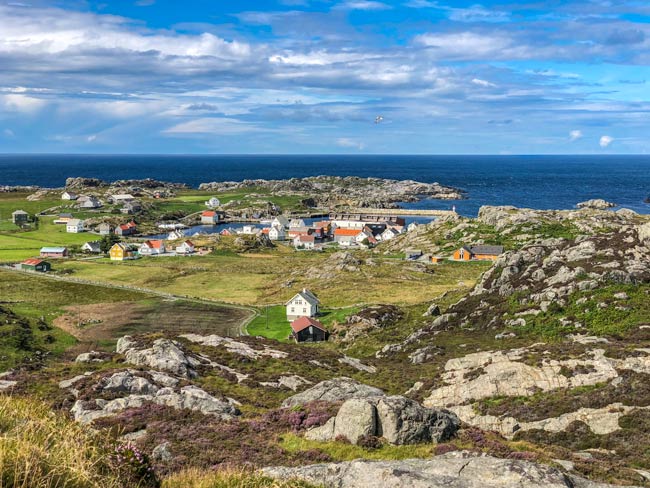
Day 7 – Svandalsfossen, Allmannajuvet – Sauda Zinc Mines, Røldal Stave Church, Låttefossen
Leaving Haugesund, you will follow route E134 to rejoin the Ryfylke Scenic Route.
Svandalsfossen
Svandalsfossen, a beautiful, cascading waterfall, tumbles 180m down the mountainside and then continues under the road. But what you see is only the final part of the falls.
You’ll need to walk a couple of hundred metres up the walkway of the small nearby hill to the right of the falls. This is where you get to see the full breadth and power of Svandalsfossen right at your feet.
The best views of Svandalsfossen are a short distance away.

Allmannajuvet – Sauda Zinc Mines
The Allmannajuvet – Sauda Zinc Mines were in operation in the late 19th century.
A series of box-like buildings with doors and roofs made of zinc with plywood panels are visible from the road and within close proximity of the mine. These buildings are the museum. The exterior is representative of the hard and austere life of a miner.
The museum is open in the summertime from June to August, however, outside of these months and for visiting groups, access can be pre-arranged.
Note that the only way to access these mines is by guided tours.
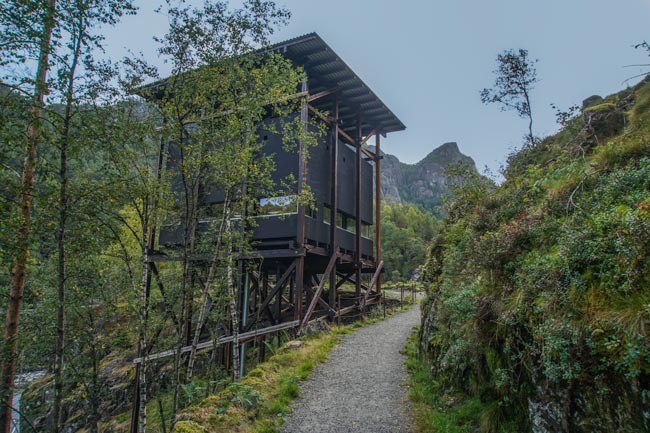
Contact details for prior arrangement are:
- Email: [email protected]
Phone: +47 52 78 42 00
Website: http://www.saudaferie.no/allmannajuvet-2/?lang=en
Røldal Stave Church
One of the must things to do in Norway is to visit a Norwegian medieval stave church.
Røldal is a lovely 13th-century stave church, built along one of the major pilgrim routes in Norway. Amazingly, this church still functions today as the local parish for Røldal.
The medieval Røldal church is renowned for its beautiful internal decorations.
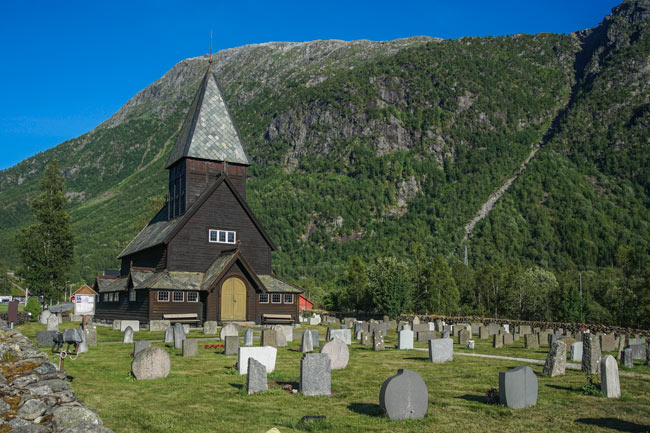
Låttefossen – Twin Waterfall
Leaving the Røldal Stave Church, pick up the Hardanger Scenic Route starting at Skare.
Just two kilometres past Skare and right by Route 13 is the twin waterfall, Låttefossen.
The waterfall splits and cascades 165m down the mountain, and in the process casts a curtain of water spray over the road.
The sheer volume of water is phenomenal.
Accessible parking is nearby with a walkway underneath the road that brings you face-to-face with the falls.
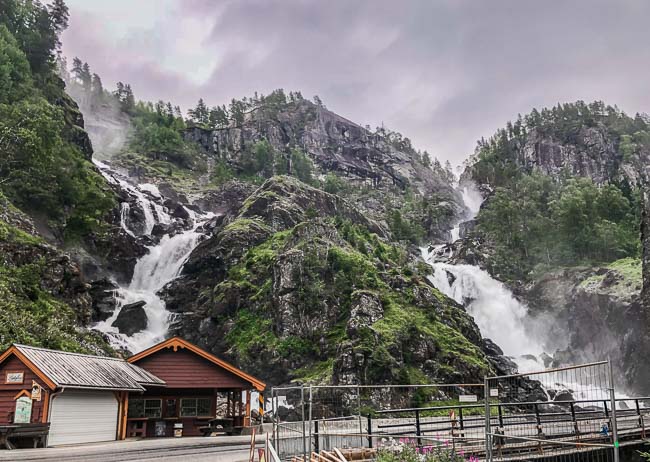
Day 8 – Bondhusvatnet, Kinsarvik
Bondhusvatnet
This Bondhusvatnet Hike is rated as easy and takes you along the beautiful lake’s edge on a paved path.
Set aside 2 to 3 hours for this scenic walk and its countless photo opportunities. We loved the Bondusvatnet hike.
The lake is bound by snowy mountain peaks and the receding Bondhusbrea Glacier is just visible on one of the peaks.
Interesting Fact: The ice from this glacier was actually exported… this was a long time ago.
As you continue, the path transforms into a trail and the journey becomes more challenging. Once you arrive at the spot where the rocks, shaped by glaciers, meet the lake, that’s when you should turn back.
But linger awhile before you start the return leg. Take a look around and admire the beautiful landscape that Mother Nature has provided.
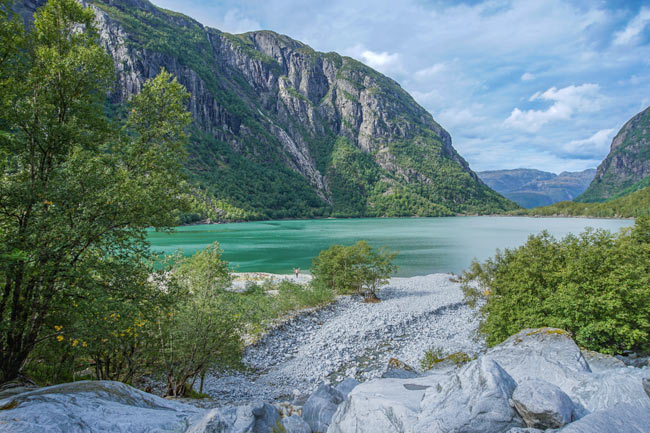
💫 If you have Extra time ▶︎ Trolltunga: the Troll’s Tongue
Leaving Bondhusvatnet, a short 1-hour drive will place you at any of the three starting points for the hike to Trolltunga, a rock ledge jutting out 700m above Lake Ringedalsvatnet. The round trip is anywhere between 7 to 15 hours for the three start points.
You’ll need to be in good shape as the level of difficulty is rated as an expert level. This hike is still on our to-do list.
Kinsarvik
Two hours drive from Bondhusvatnet has you arriving at the pretty town of Kinsarvik.
It has one of the oldest stone churches in Norway dating back to the 12th century. Keep a look out for its Roman-styled arches.

Close by is the grand, old, white-washed tourist office building named ‘Kinsarvik Brygge’.
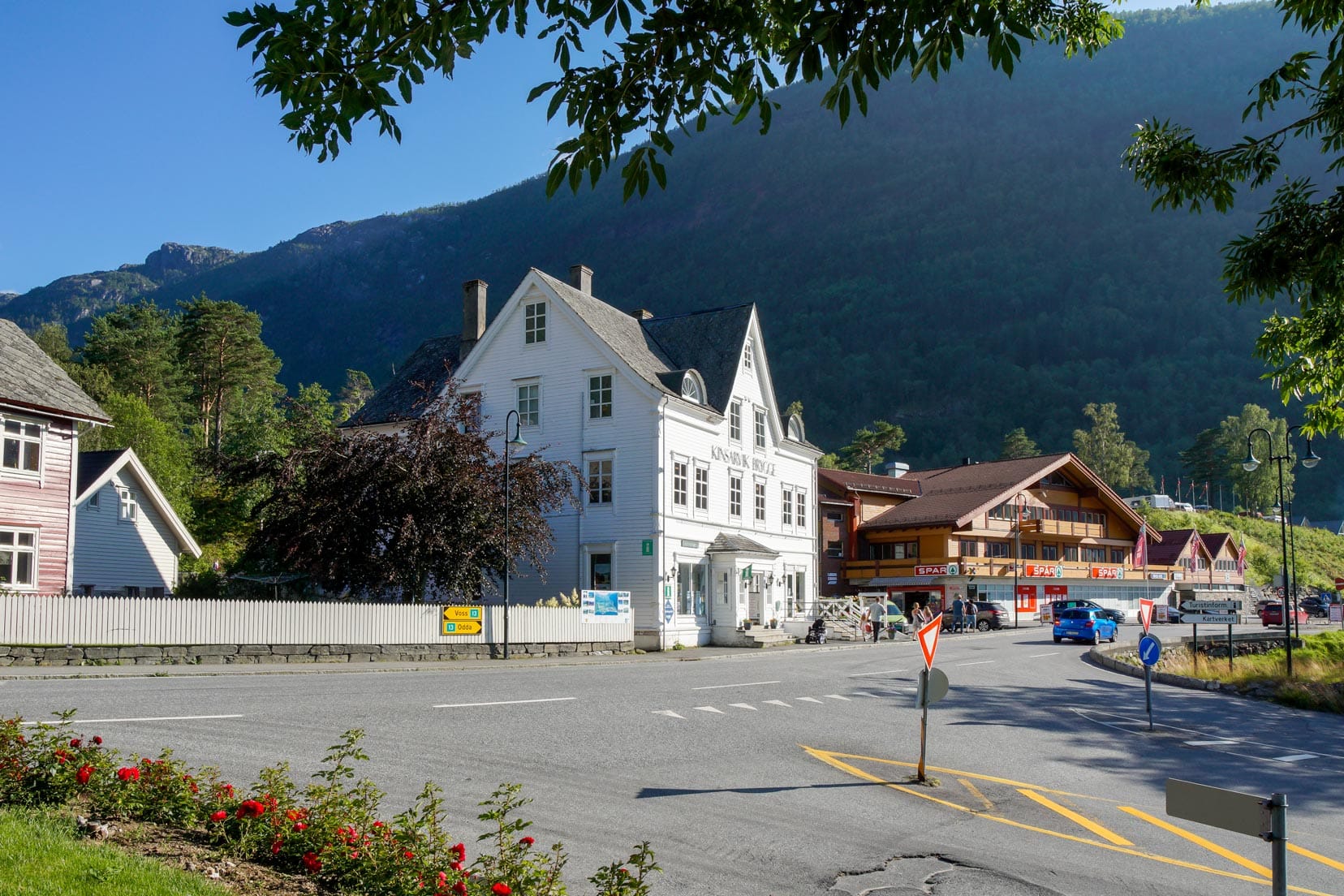
Day 9 – Dronningstein Hike (Kinsarvik — Lofthus)
Kinsarvik is a great place to start your hike of the acclaimed Queen’s Panoramic Route through the Hardangervidda National Park. This 16-kilometre trail is rated as difficult and ends in Lofthus. Expect the hike to take between 8 to 9 hours and that’s just one-way.
The reward along the way is panoramic views of Hardangerfjord, orchard fields, forests and the expansive Hardangervidda National Park.
The descent down to Lofthus is accomplished by walking the handcrafted stone Monk Steps (Munketreppene). The Steps’ construction began in the 13th century and took over 300 years to complete.
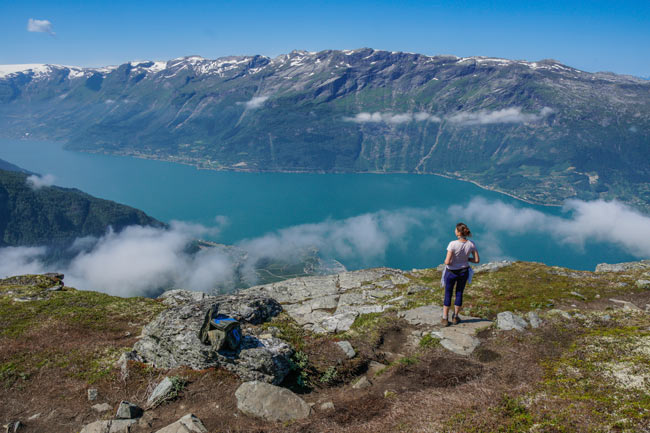
Day 10 – Flåm Fjord Cruise
Now for a change of pace. How about a fjord cruise?
Drive the two hours north from Kinsarvik to Flåm. Board a cruise ship and depart Flåm for a slow passage down Aurlandsfjord and then Nærøyfjord, a UNESCO World Heritage Site.
The final destination is the town of Gudvangen where a bus returns you to Flåm.
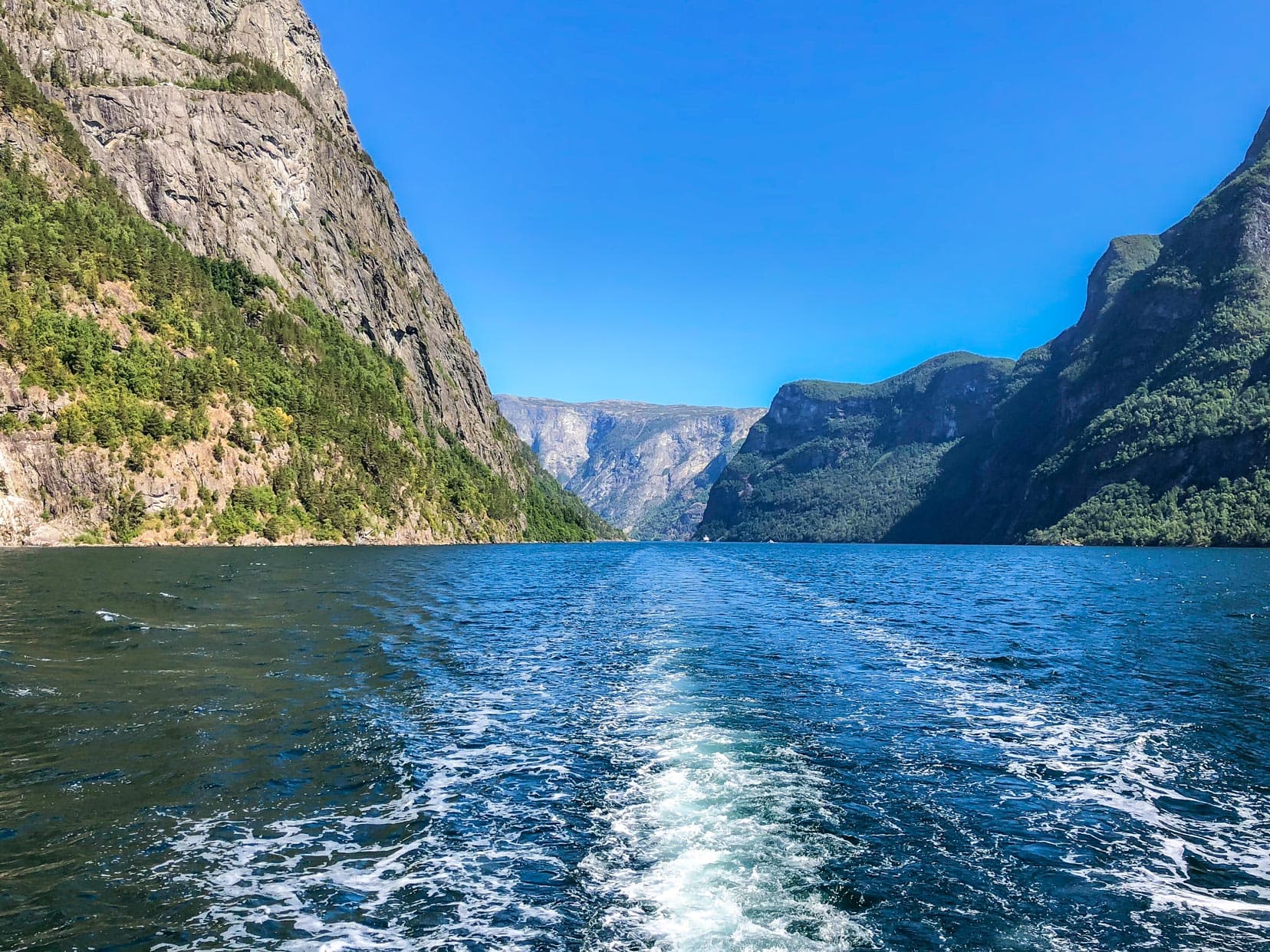
What awaits on this cruise? Fairytale scenery. Towering mountains, blue crystalline fjord waters, cascading waterfalls and plenty of pure Norwegian air.
If you’re troubled with seasickness — don’t worry — the fjord waters are always calm (see the video below).
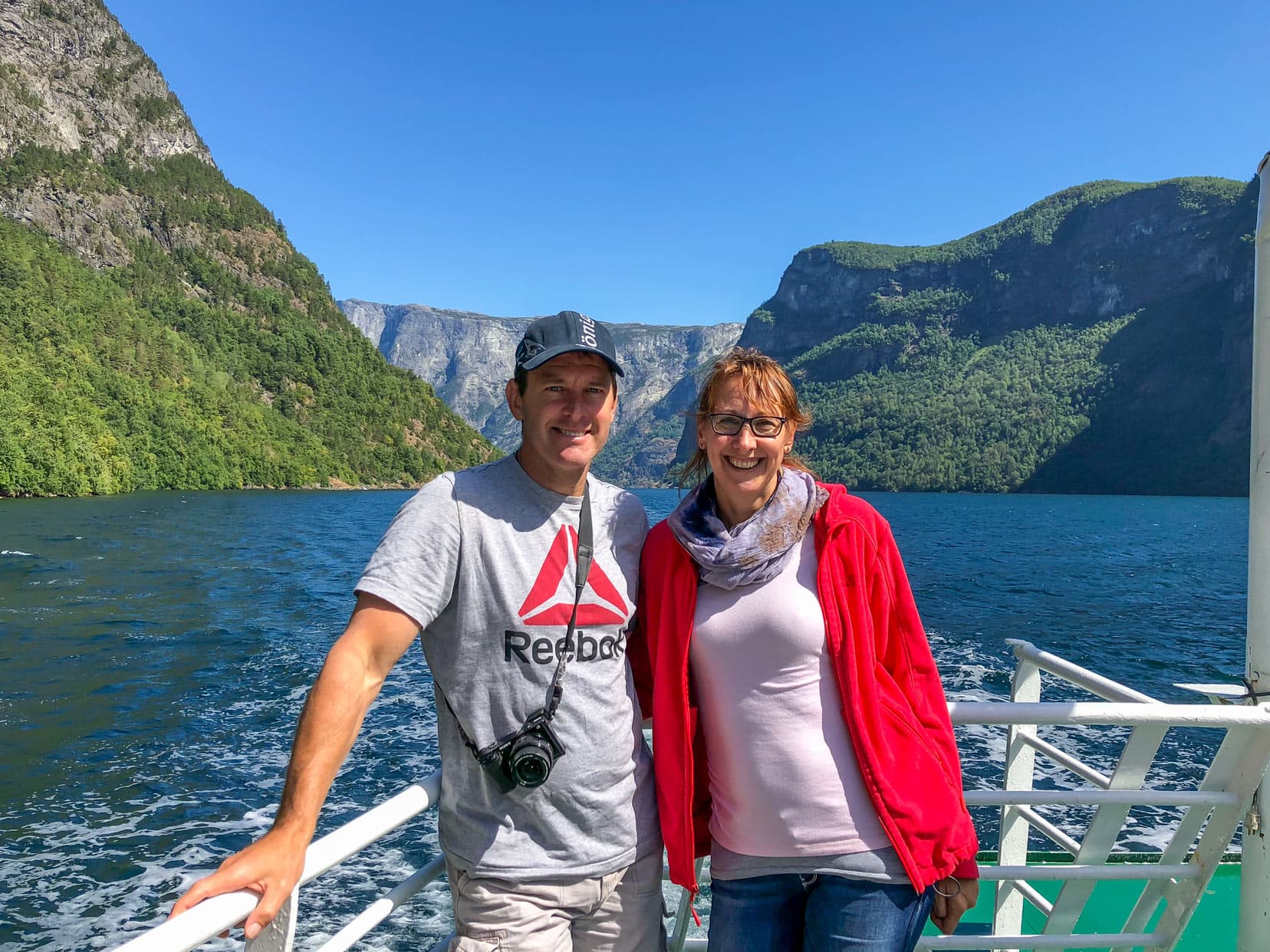
At Gudvangen, don’t miss seeing the wooden Viking sculptures by the fjord. In Norway, reminders of the Vikings are everywhere.
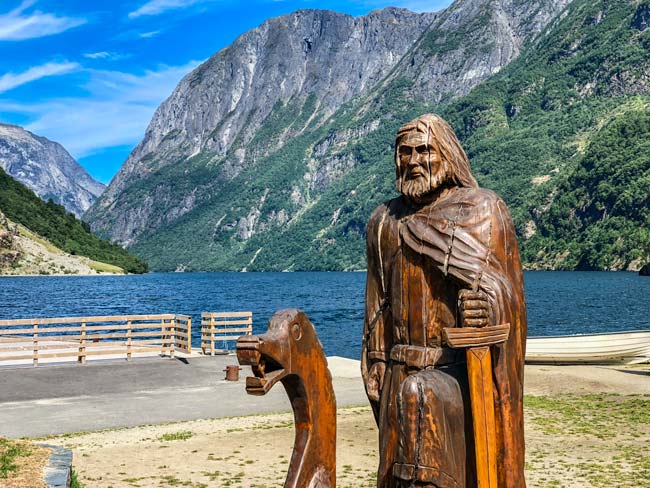
VIDEO: Calm Norwegian Fjord Waters
💫 If you have Extra time ▶︎ Flåm Railway Journey through the Mountains
If a fjord cruise is just not your thing then a great alternative is an incredible 20-kilometre train journey.
The Flåm railway journey has been voted by Lonely Planet, as one of the most beautiful train journeys in the world.
It begins in the fjords and climbs to the top of the mountain, passing farms, steep ravines, cascading waterfalls and snow-capped mountains.
The return trip takes around two hours.
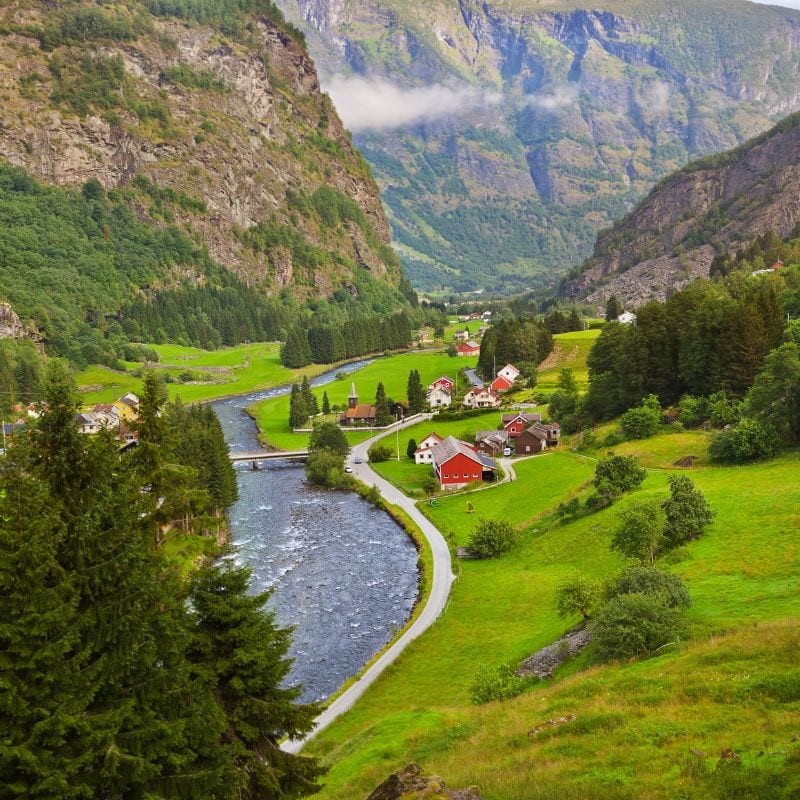
This self-guided trip takes you from Bergen and includes a two-hour scenic boat tour through Nærøyfjord and an incredible trip on the Flåm Railway.
Bergen: Self-Guided Nærøyfjord Cruise and Flåm Railway Tour
⭐️ 4.6/5 Star Reviews | ⏰ 10 hours | Book Here
Day 11 – Stegastein Lookout, Borgund Stave Church and Kongevegen, Lærdal Tunnel, Hopperstad Stave Church, Vangsnes Historic Huts
For the next leg of this 2 week Norway itinerary, depart Flåm and drive 30 minutes on the Aurlandsfjellet Scenic Route to reach the Stegastein lookout.
Stegastein Lookout
The beginning of the Aurlandsfjellet Scenic Route winds up the mountain to a height of 650m above Aurlandsfjord. At the top, an impressive wooden viewing platform juts out from the mountain, Stegastein.
From the lookout, there are fantastic views down into Aurlandsfjord.
Parking is close by the lookout.
Note: Aurlandsfjellet Scenic Route north of Stegastein is closed in winter.


Borgund Stave Church Then Stroll Kongevegen (the Kingsroad)
Continue to drive the Aurlandsfjellet Scenic Route to the 12th-century Borgund stave church, one of the best-preserved stave churches in Norway. It is renowned for its characteristic dragons-head roof carvings.
Guided tours are available (which we took advantage of) for a minimal extra fee on top of the entrance fee. By taking the tour, you learn so much more of the history.
100m away, is the informative Borgund Church Museum which is also worth a visit. Here, there are a wide variety of souvenirs available.

Behind the Borgund Stave Church lies Kongevegen, or ‘King’s Road’, a 100-kilometre stretch of road with hand-crafted stone wall foundations built in the early 19th century. This road joined Bergen with Oslo.
A section of King’s Road, named Vindhellavegen, can be walked from Borgund to Rimskjold. In places, the winding road wraps in tight 180-degree bends.
The 1.7-kilometre walk takes one-hour walk and is rated as medium difficulty. This walk is open from May to November.
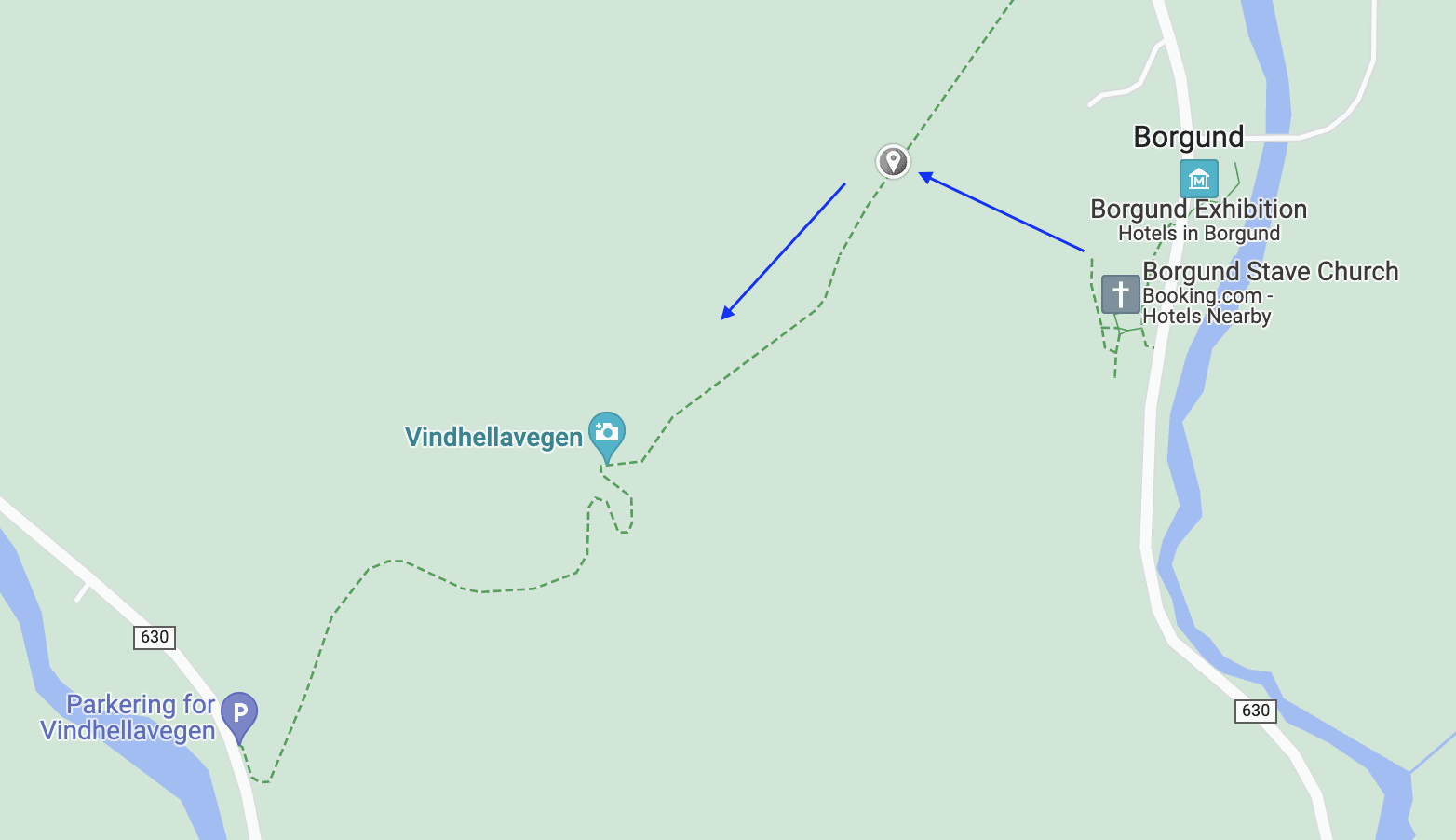
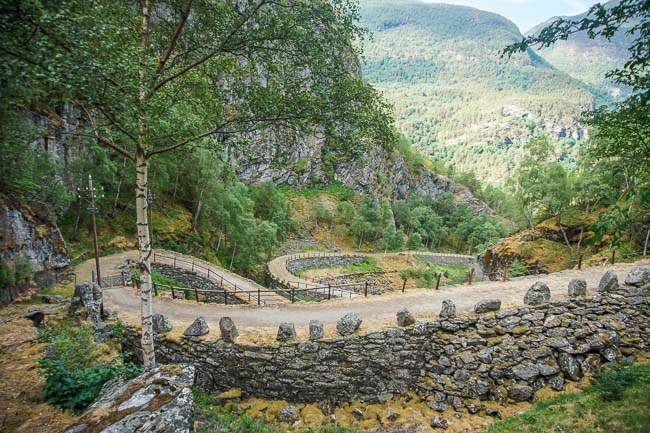
Driving option: Fancy seeing even more stunning scenery along the bubbling Lædalselvi River? To start this drive, when departing the Borgund Stave church, join road 630 then merge with E16 and take the FV 271 all the way to Lærdalsøyri.
It’s a beautiful drive that weaves through the mountains and is far from any signs of modern life.
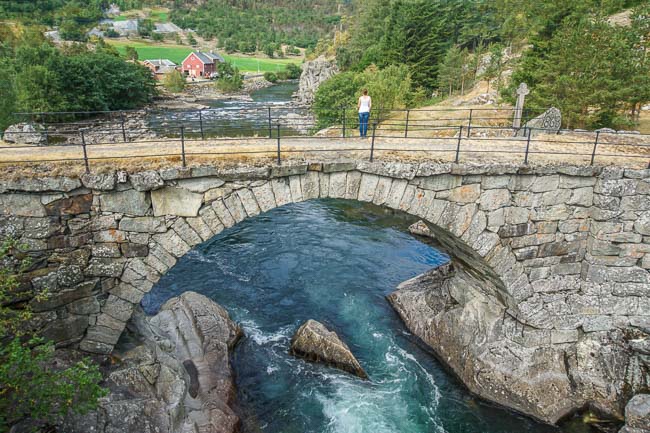
Lærdal Tunnel
At Lædalsøyri, take route 5 then E16 to drive the world’s longest road tunnel, the Lærdal Tunnel, connecting Aurlandsvangen with Lærdal.
The 24.5 km tunnel is interspersed every 6 kilometres with open tunnel areas that are beautifully lit with artificial lighting and offer places to park off the road.
We grabbed a bit of iPhone tunnel footage below.
Hopperstad Stave Church
The town of Vikøyri is home to the beautiful Hopperstad Stave Church, dating back to 1130 AD. This church shares the title of the oldest stave church in existence alongside Urnes stave church.
The church is located in a beautiful fjord setting.
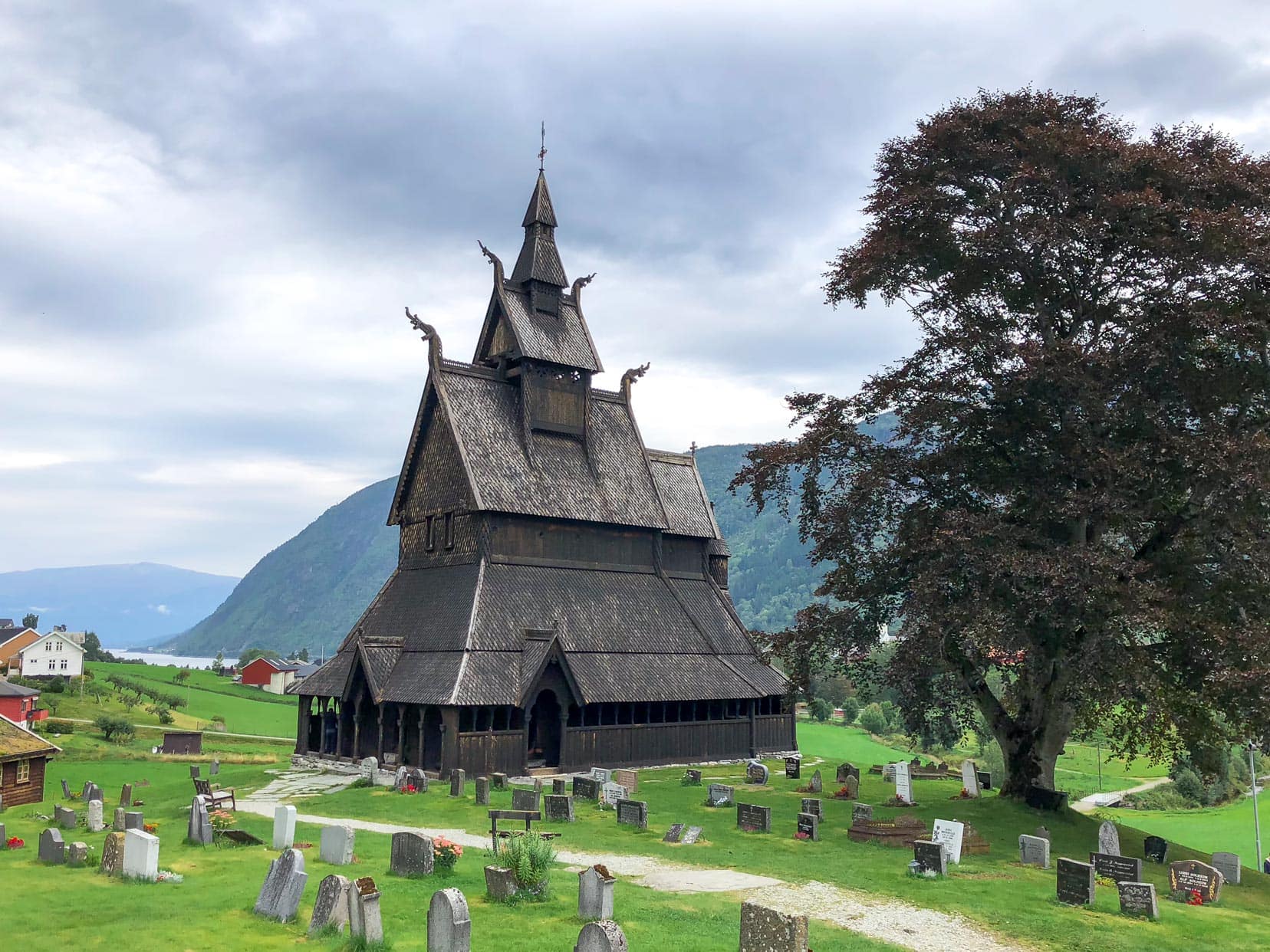
Vangsnes
A short 12 kilometres away is the quaint village of Vangsnes.
Here at the harbour is Stortinget; a group of roughly 60 historic buildings where people used to gather and exchange news. They are colourful buildings with small information boards that tell you about its history.
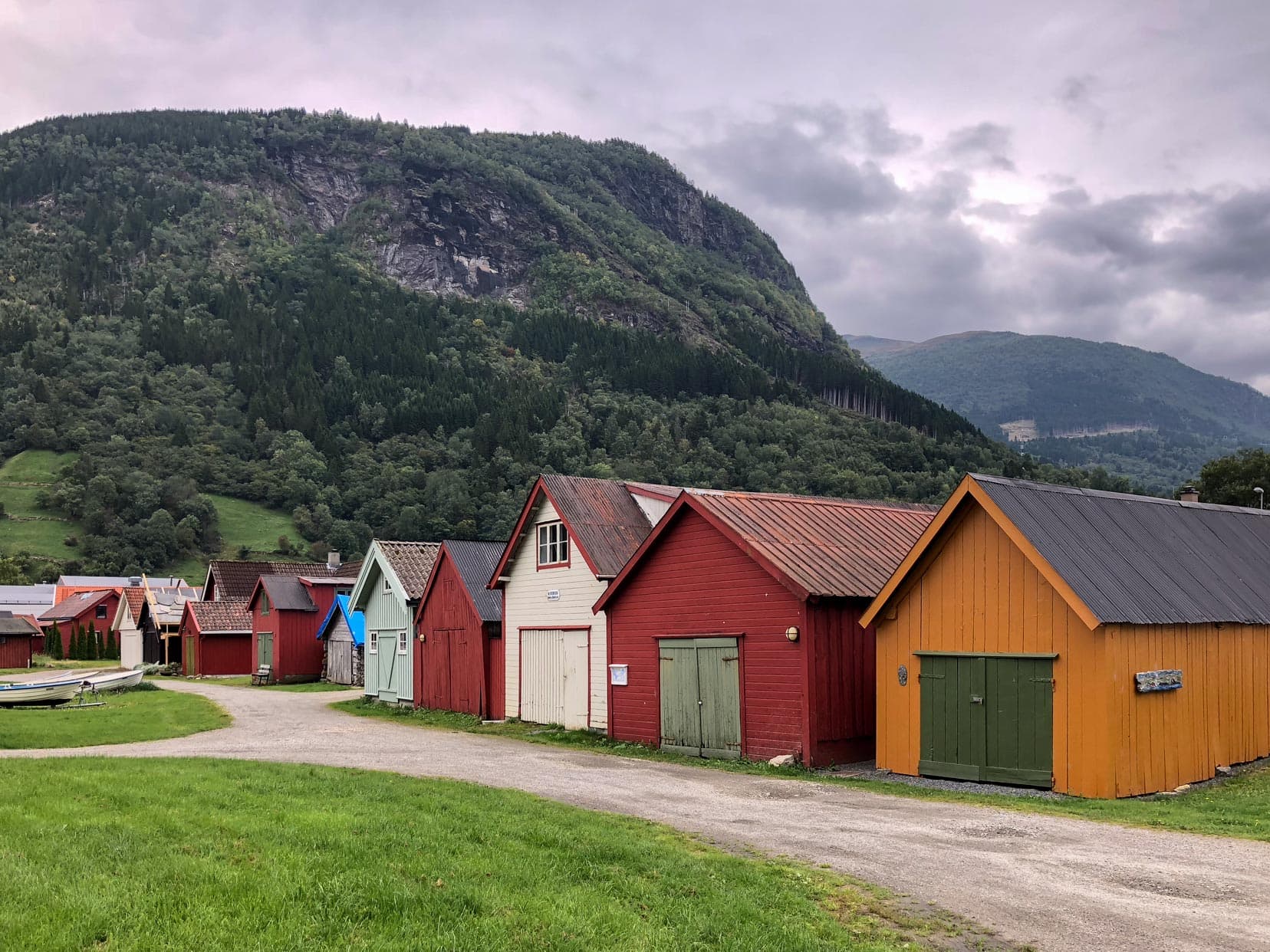
From Vangnes you can gaze out onto the famous Sognefjord, one of the longest fjords in the world, at a total length of 203 kilometres.
Your route now swings south for a 1.5-hour drive to Voss.
Day 12 – Voss, Steinsdahlsfossen
Smoked Sheep’s Head in Voss
The traditional food of Western Norway is the smoked sheep’s head which is served as an intact head on a platter. And the town of Voss is renowned for its Smalahove or smoked sheep’s head.
Although we had this delicacy in our sights, it wasn’t on offer when we passed through Voss. However, here’s is a video to tease the tastebuds.
Steinsdahlsfossen
Leaving Voss, drive the Hardanger Scenic Route to Steinsdahlsfossen.
Steinsdahlsfossen is one of the most visited waterfalls in Norway and is special because a walking path takes you behind the waterfall.
The waterfall has a drop of 50m and is set back from the road in a picturesque setting.
Plenty of parking is nearby.
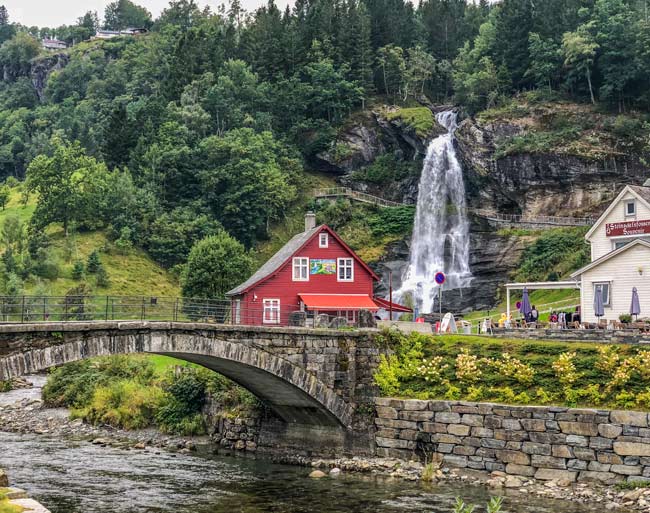
With Steinsdahlsfossen in the rearview mirror, it’s all eyes on the final stop of this 2-week Norway itinerary, Bergen.
Be amazed at the absolutely stunning scenery as you get closer to Bergen. Picture book landscapes of mirror-like lakes, calm fjord waters and vibrant colours will keep you enthralled.
Quintessential Norway.
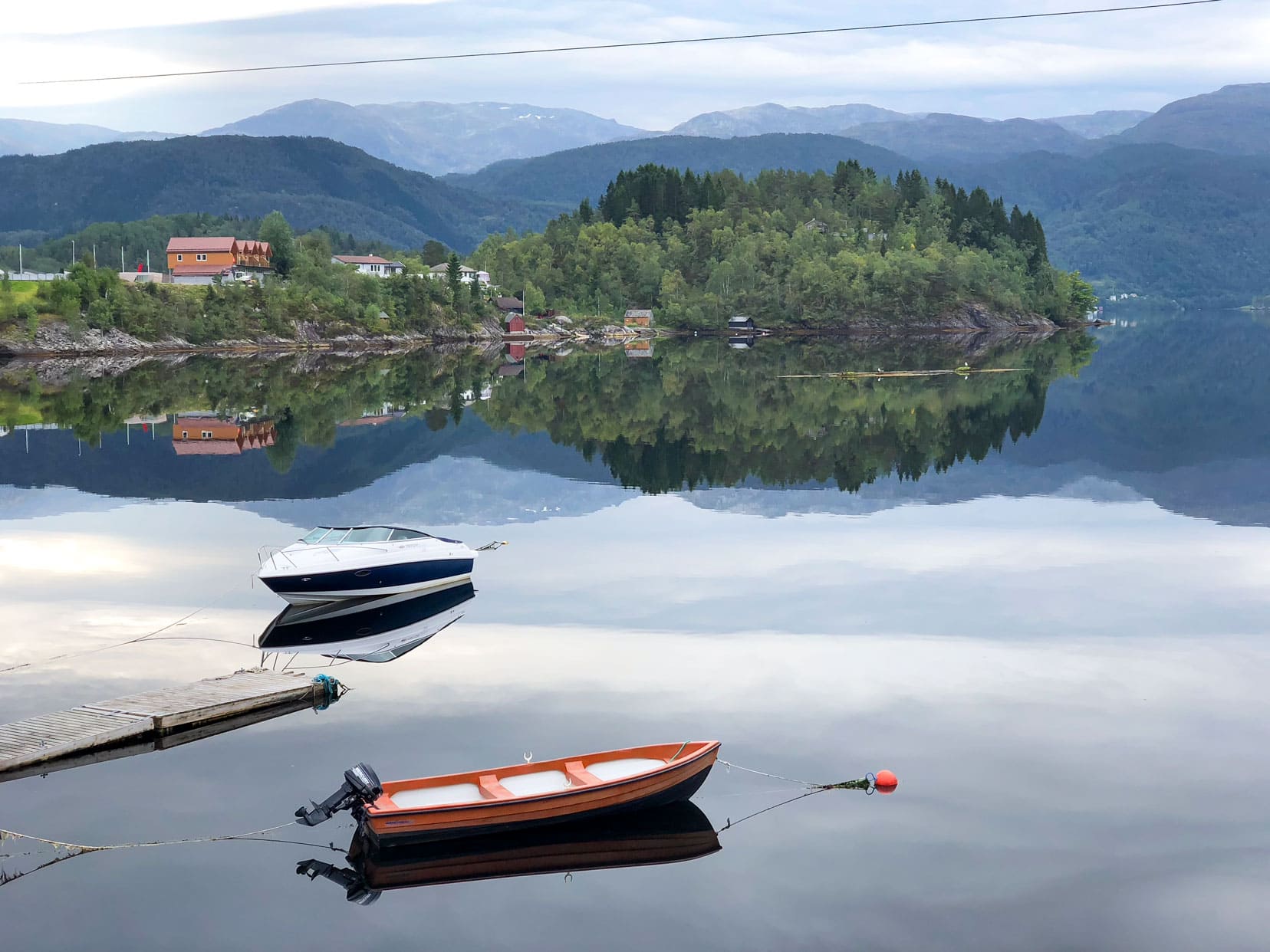
Day 13 & 14 – Bergen
The final stop on this epic 2-week itinerary is Bergen, a city nestled amidst the dramatic fjords and surrounded by majestic mountains. This charming city offers a perfect blend of natural beauty and cultural delights. Explore the colorful Bryggen Hanseatic Wharf, a UNESCO World Heritage site, and wander through the vibrant fish market.
We chose to stay in downtown Bergen. Not only is it close to the old part of town but an easy walk to the best attractions of Bergen.
St John’s Church
This church has the highest spire in Bergen topping out at 61m with the build being completed in the late 19th century. The church follows a crucifix design and is the biggest church in Bergen.
Bergen Fish Market
This market is one of the most visited outdoor markets in Norway. The vibrant fish markets date back to the 13th century. Now that’s history for you.
You’ll find plenty of restaurants selling various types of seafood.

Bryggen
The Bryggen is the historic harbour district in Bergen and is registered on the UNESCO list for World Cultural Heritage. The waterfront buildings on the harbourfront were actually Bergen’s first buildings.
However, the ones you see today are not the original structures. A huge fire in the early 18th century guttered the buildings, resulting in a near-total rebuild.
Many of the current buildings once housed nautical trading offices but now, these colourful buildings are home to restaurants, small shops and galleries.
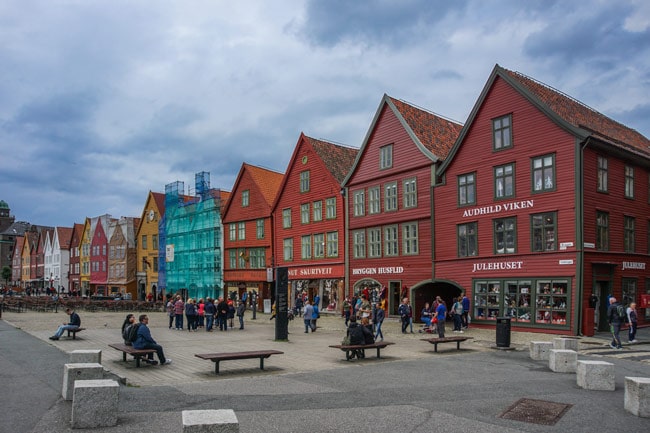
Musikkpaviljongen
The musikkpaviljongen is a lovely white iron music pavilion found in City Park, amongst lovely gardens. It has an attractive Moorish-styled architectural design adorned with flowers that blend in well with Bergen’s surroundings.
It is a great place to sit and feel the grandness of the seven mountains that surround Bergen.
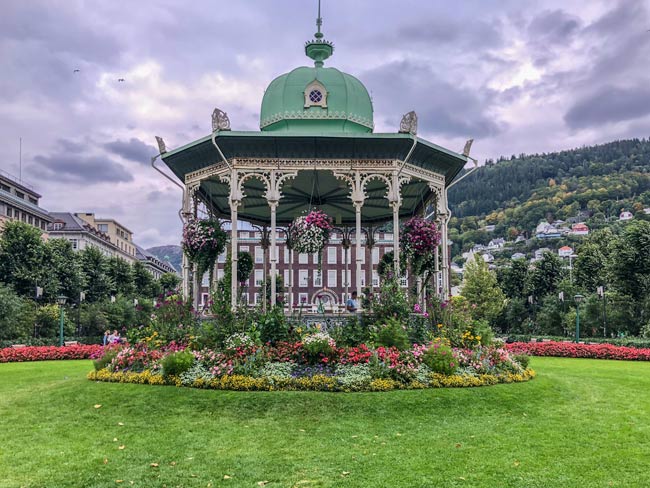
Lille Lungegårdsvannet
Close by the music pavilion is the small, picturesque, octagonal-shaped lake with a central fountain, Lille Lungegårdsvannet.
It attracts many different varieties of birds to its waters and is a great little escape from the city’s hustle and bustle.
💫 If you have Extra time ▶︎ Mount Fløyen – Bergen Bird’s Eye View
If you enjoy panoramic views then why not hike to Mount Fløyen which overlooks Bergen? Don’t worry, you won’t have to walk all the way up as there’s also the Fløibanen funicular that’s available.
Everything You Need to Know for Your 2-Week Norway Itinerary
Transport
Self-driving this 2-week itinerary is definitely the best way to go. Your time is limited so to get the most out of these 2 weeks you’ll need the flexibility to travel at your own pace. Public transport won’t be able to provide the service you’ll need.
We campervanned around Europe for a year and having our own wheels allowed us to choose our own timings which made the trip just so much fun.
I’d recommend hiring a car or campervan from either Stavanger or Bergen. It keeps things easy and takes the stress out of this great holiday.
Car and Motorhome Rental
Discovercars.com gave us the best car rental deals in Europe, especially during our road trip around Iceland.
Motorhome Republic found us the best hire deals for campervan hire for our year-long road trip around Europe. They found better pricing than we could find going direct ourselves, therefore, making the process so much easier.
What to Pack for Your Norway 2-Week Trip
- Even in Summer, there is a fair bit of variability in temperatures. The weather can change quite quickly. Cold and wet in the morning can turn into a hot day.
Layering your clothing is the best approach with waterproof tops and bottoms. - Waterproof hiking footwear
- Walking poles to provide assistance especially if you suffer from weak or sore knees. Some of these mountain descents are pretty steep.
- Waterproof backpack or backpack with a waterproof cover. Also essential for carrying water, food and keeping camera accessories dry.
Have some extra room in your backpack? Consider some of these useful travel items.
>>> Check out our Recommended Travel Items Here
Driving in Norway
- Most of Norway’s maximum speed limit is 80km/hr on open roads with a few locations having a 100km/hr or 110km/hr limit but this will be clearly indicated. Speed and trip (average speed between locations) cameras are in abundance, so drivers beware.
- Norway has an electronic road toll system. We owned a non-Norwegian registered car (U.K. plates), so needed to register our vehicle on the Norwegian PLC site with our credit card details. Every 3 weeks to 4 weeks we were invoiced. It’s quick to set up and hassle-free.
- Summer and Autumn are the busy tourist seasons but also the best time to plan your trip to Norway as you’ll find pretty much all of Norway’s roads open and not closed due to snow.
- Norway’s traffic rules can be found on the Norwegian Public Roads Administration site vegvesen.no or you can make direct contact with Traffic and Road Information on +47 815 48 991.
- To check to see if any of Norway’s Scenic Routes are closed, follow this link to the Norwegian Scenic Routes site.

Typical fjord driving
Handy Phone Apps and Emergency Phone Numbers
- yr app (as in the 2 letters y and r) This is an accurate Norway weather app for both IOS and Android devices
- outtt app provides detailed trail maps for Norway for both IOS and Android devices
- maps.me app is an off-line map for both IOS and Android devices
- Smart Parking app is available for both IOS and Android phones and allows you to pay for parking online and not have to worry about carrying around coins or credit cards
- Emergency Phone Numbers – Fire: 110; Police: 112; Ambulance: 113
Where to Stay in Norway
We use Booking.com as we can find a variety of cheap and budget accommodations such as local guesthouses and cheap hotels.
When booking accommodation, some of the cheaper establishments do not include sheets and pillowcases as part of the standard booking and need to be added at an extra charge.
Make sure to check the booking details carefully.
Hiking Difficulty Levels in Norway
Norway classifies its walks and hikes depending on the difficulty as follows:
- Easy (Green) – Novice Hikers/ No experience necessary
- Medium (Blue) – Intermediate with some hiking experience /average fitness level
- Demanding (Red) – Experienced walkers/high fitness level well equipped with good hiking boots/ basic navigation skills /map and compass.
- Expert (Black) – Longer and more technical hikes /Experienced hikers/ high fitness level well equipped with good hiking boots/ basic navigation skills/map and compass

Norway Events
During our time in Norway, we’ve joined these celebrations. If your trip timing is right then these may be added to your calendar too:
- Tall Ships race (Another option, which we didn’t do, is to consider joining a tall ship to sail the Norwegian coastline)
- Norway National or Constitution Day is held in nearly every Norwegian village, town and city (17th May)
- Viking Festival at Avaldsnes (falling on the second weekend of June)
- Skudeneshavn Festival (first week of July)
- See the King and Queen of Norway – Every year King Harald and Queen Sonya pay a visit to a Norwegian county (the Queen visited Rogland county and included Skudeneshavn on her schedule whilst we were there)
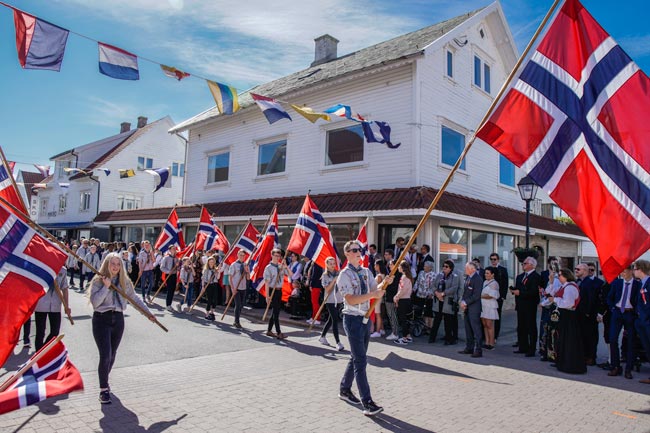
FAQs
2 weeks is enough to have a taste of Norway time using the right itinerary. Different seasons will offer different attractions such as the Northern Lights which are only seen between September and April.
June through to October are great months to see Norway as Norway’s roads are not snowbound. If you like snow and the Northern Lights then visit between September and April.
Norway is a huge country and a lot of time can be spent on travelling between attractions. Either focus your visit on one or two nearby areas or extend the length of your visit to allow more time.
Norway 2-Week Itinerary … That’s a Wrap
This epic 2-week road trip from Stavanger to Bergen is sure to leave you with unforgettable memories of Norway’s breathtaking landscapes, rich history, and charming culture.
Driving the scenic routes is a great way to see the country’s most stunning landscapes. Don’t miss the opportunity to add Norway to your bucket list.
Grab this FREE road trip Travel planner to help make this trip the best it can be

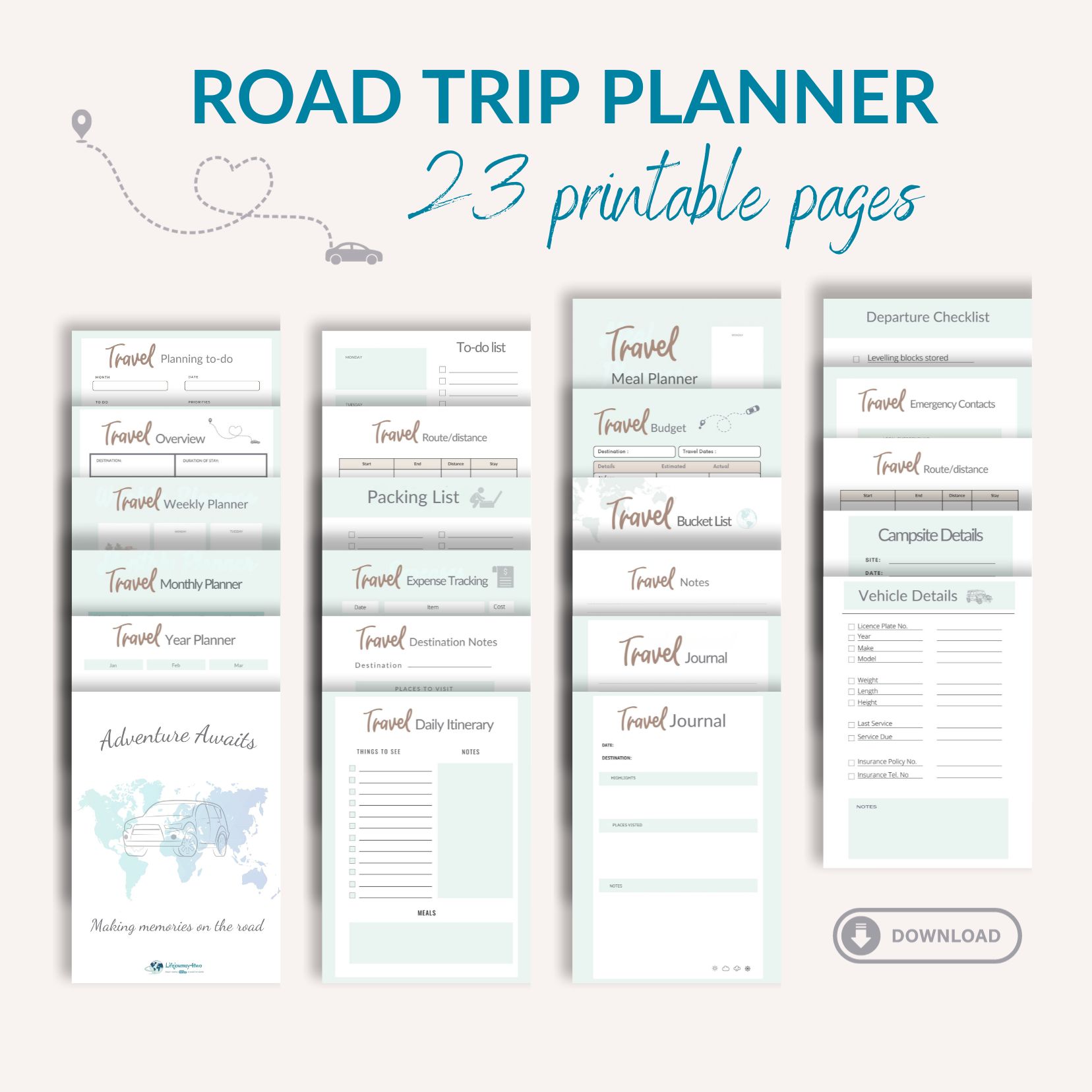
Pin and Save for Later
Read More Here:
- Norway Travel Guide
- Best Way to Plan Your Road Trip
- The Best Hiking in Norway
- Tips to Help You Take Awesome Road Trip Photos
Planning Your Travels?
These are the travel resources we recommend and use when planning our trips.
- 🚘 Car Hire: We use DiscoverCars.com
- Motorhome/Campervan Rental: We highly recommend the Motorhome Republic
- 🪪 Order your International Driver’s Licence online here
- 🛏 Book Accommodation: We use Booking.com to find accommodation that suits our budget
- 🐶 Pet Sitting/Pet Sitters: Check Out TrustedHousesitters here (Use our Discount code: LIFEJOURNEY25 for 25% off. )
- Activities and Experiences: Get Your Guide and Viator
- Travel Insurance: Safetywing or World Nomads
- 🥾 Travel Gear and Accessories: Check out our top picks here — Lifejourney4two page on Amazon
For a more thorough list, visit our Travel Resources page here.

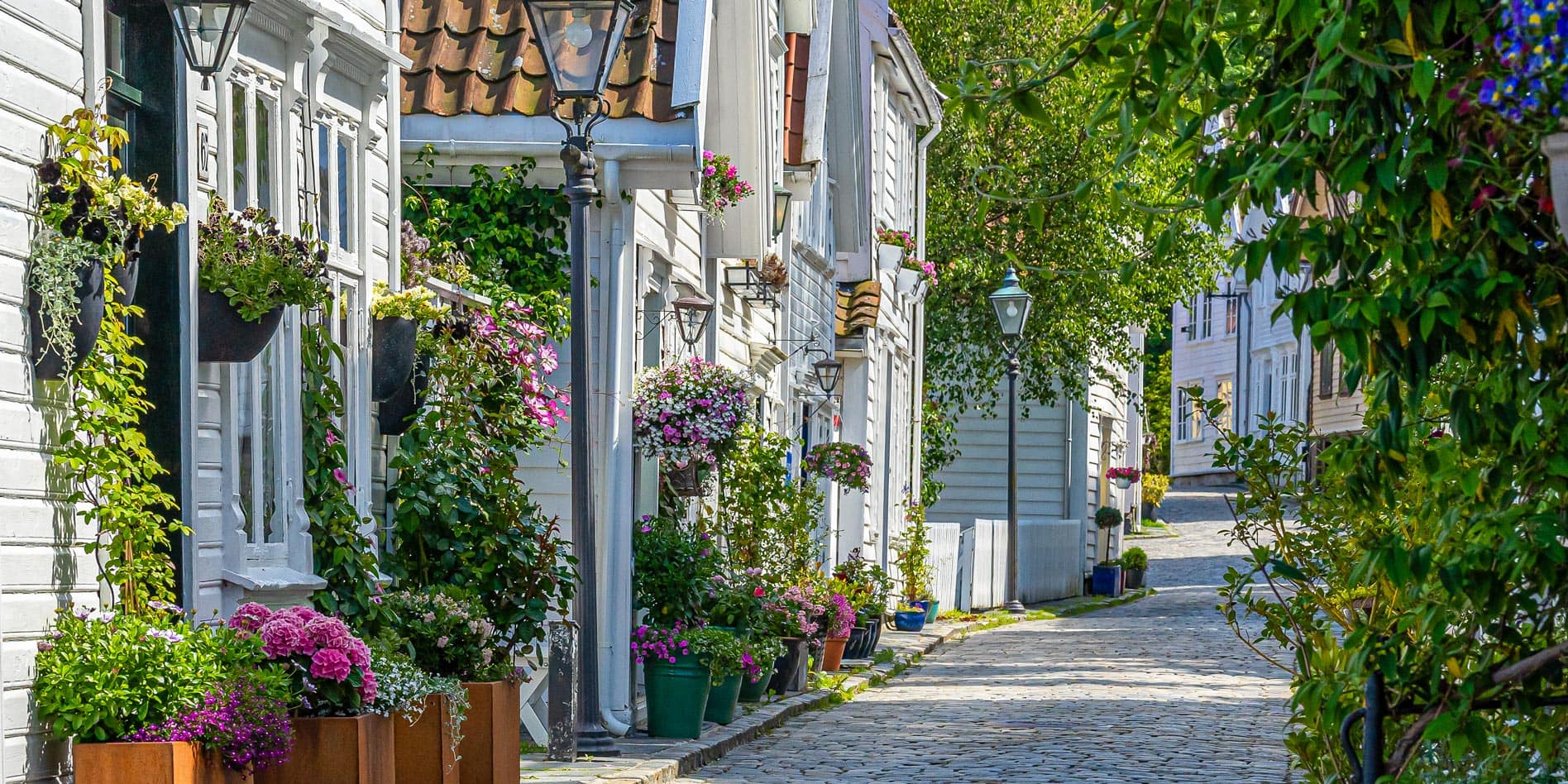
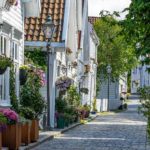
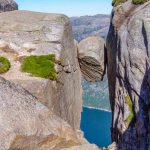

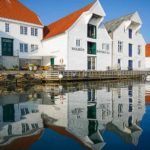
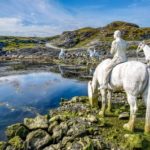
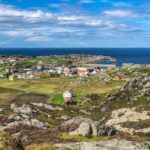
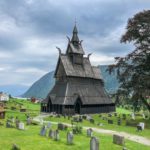
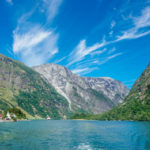
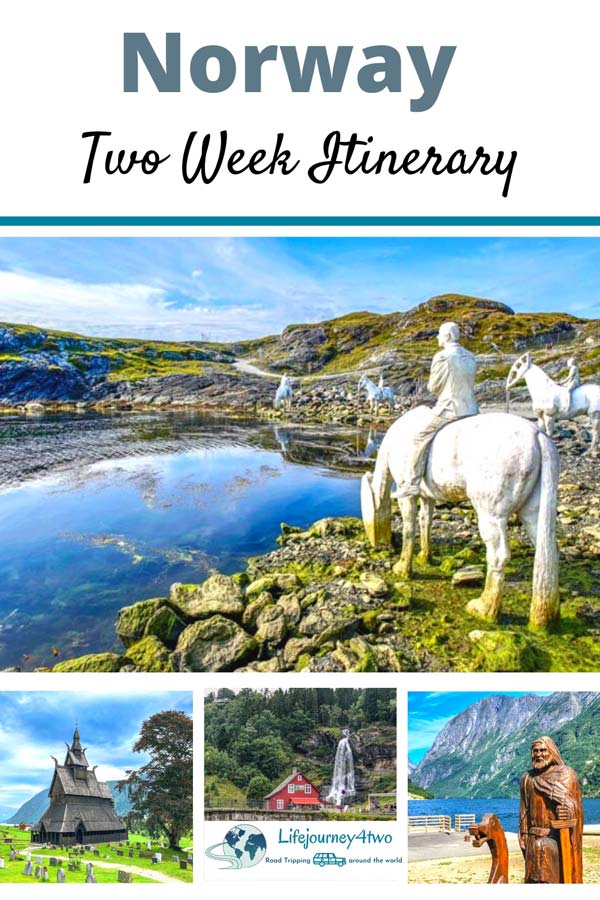
Hello Lars!
Thank you for this post, so informative!! As a great fan of fairytales and enchanted places, after reading your post all I want is to book a flight to Norway, rent a van and start exploring this country. Although I’ve already visited Oslo, I want to learn more about Norway, it’s landscapes and its mythology.
Stay safe!
Carina – Punkiotravels.
Thanks Carina. Norway is certainly the place for enchantment – we’ve spent a lot of time there and never tire of its beauty. Hope you get to explore it and learn more about this stunning country.